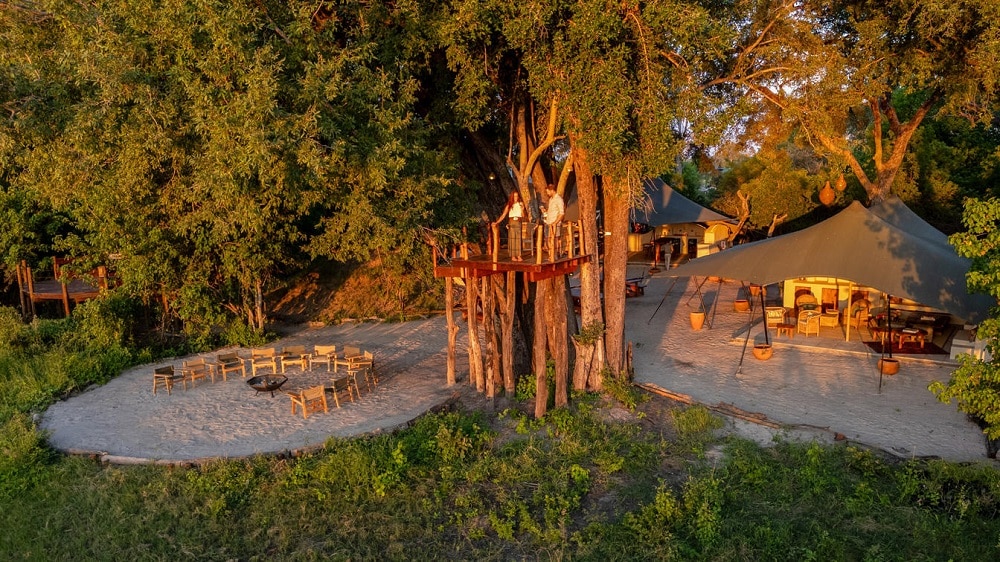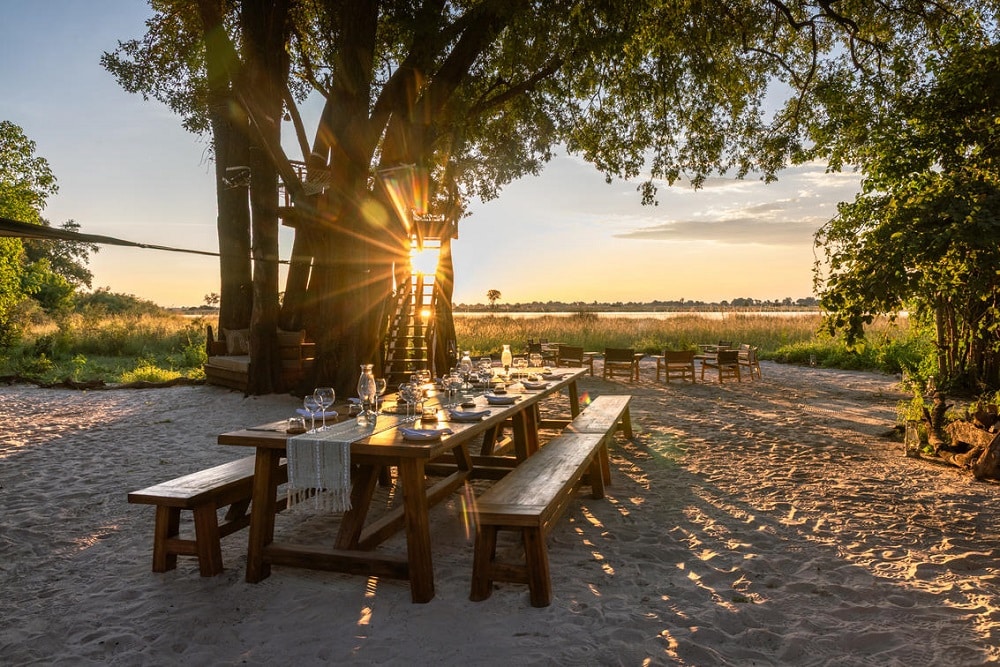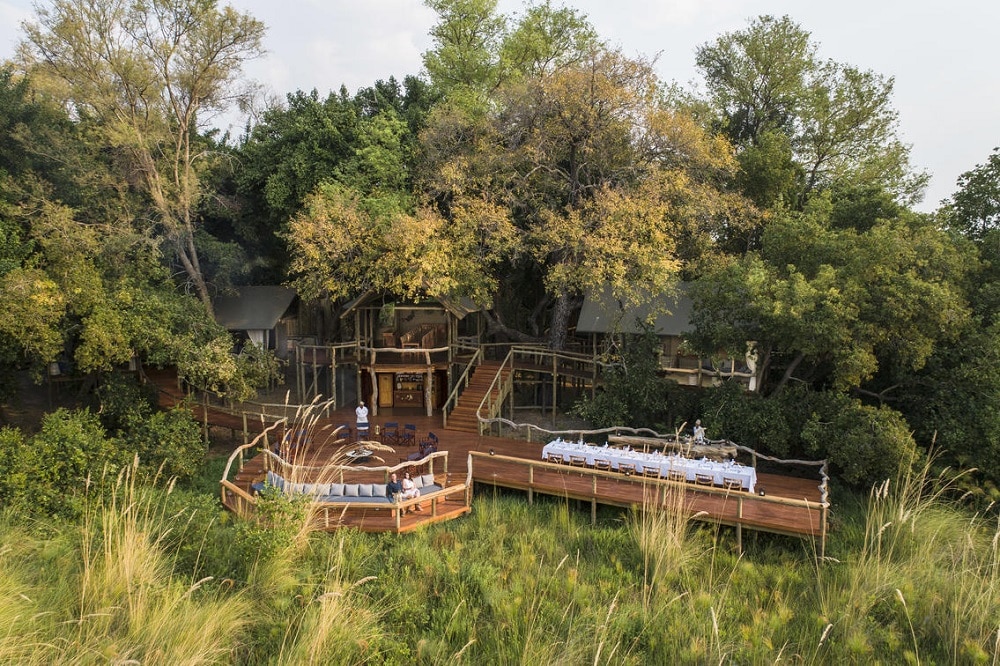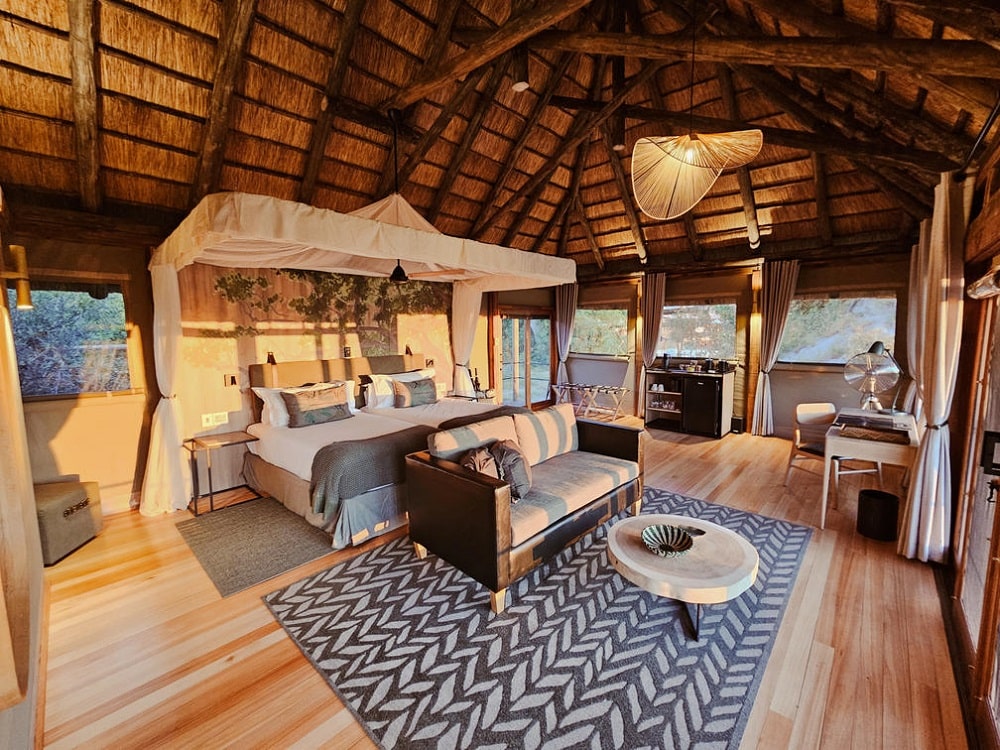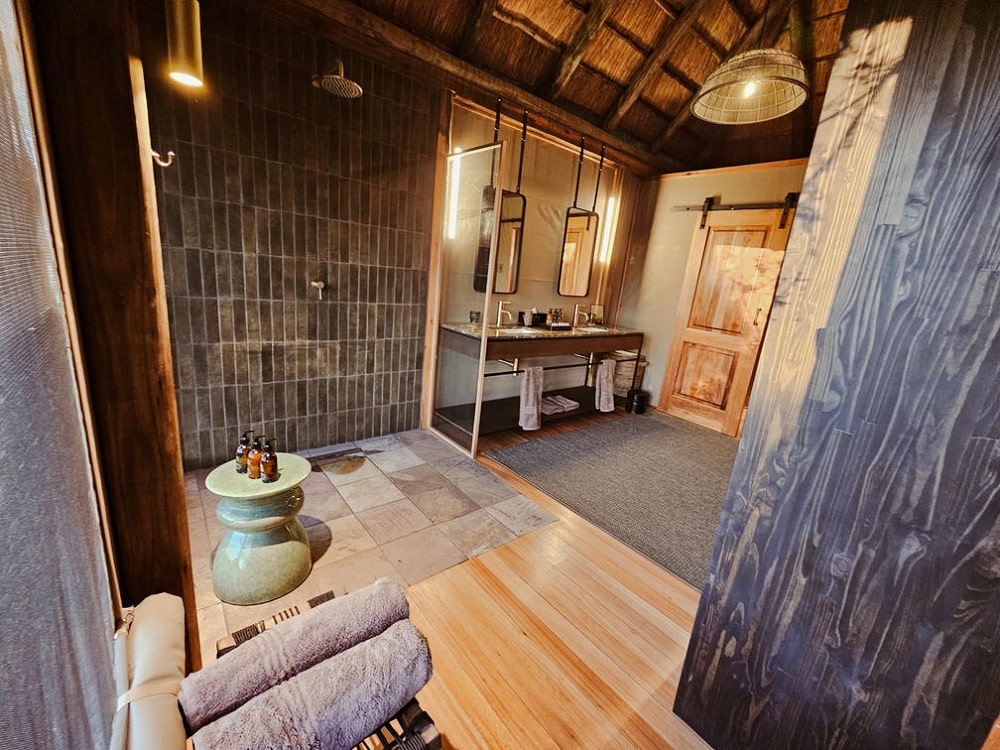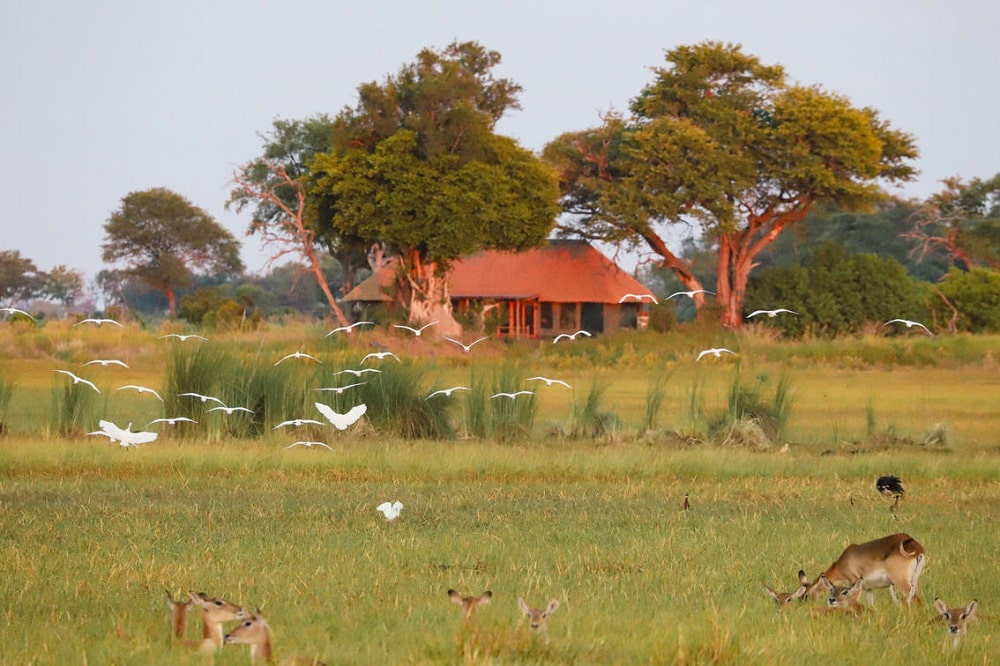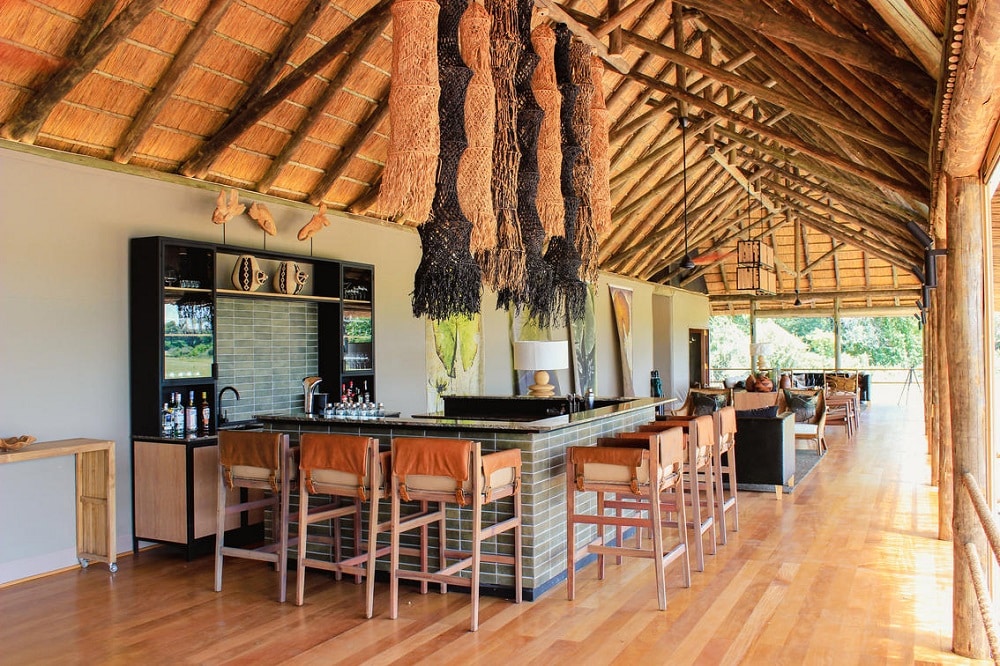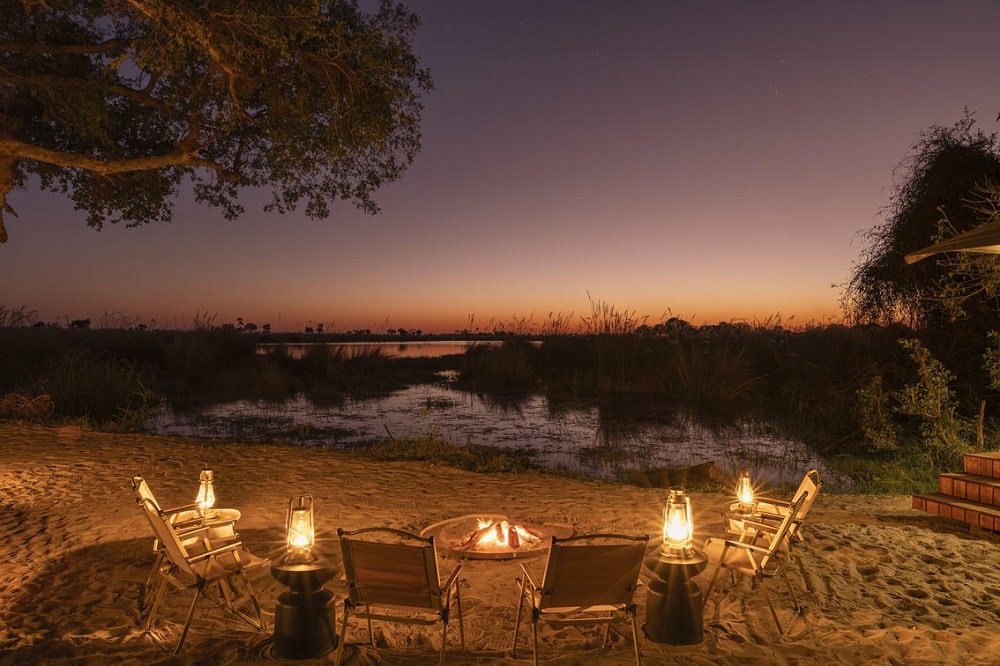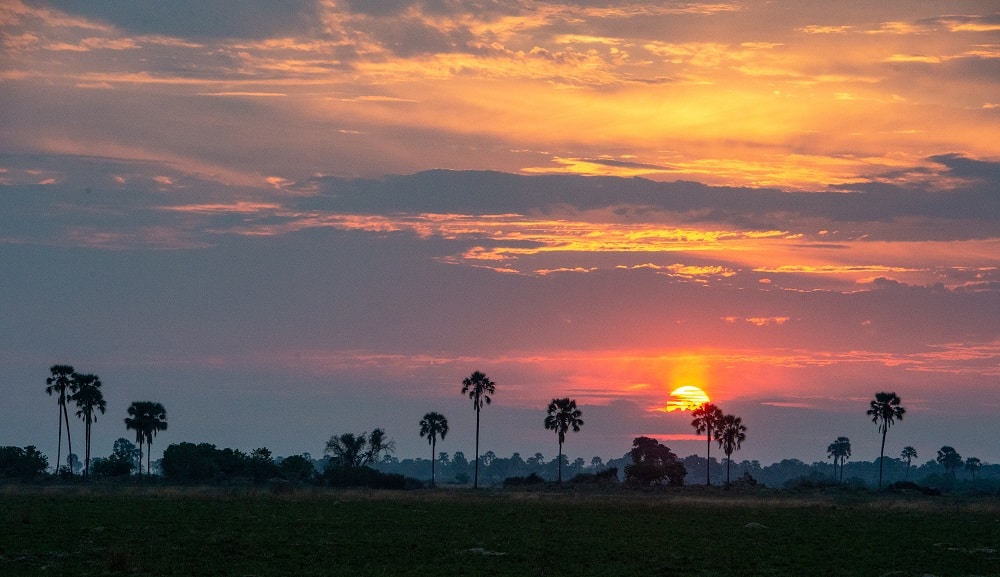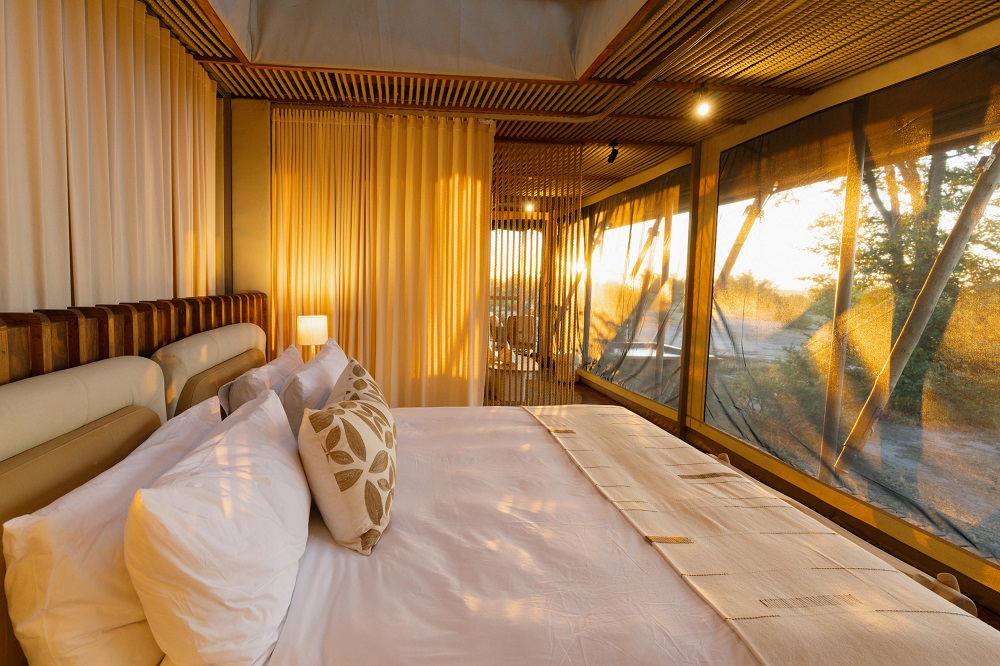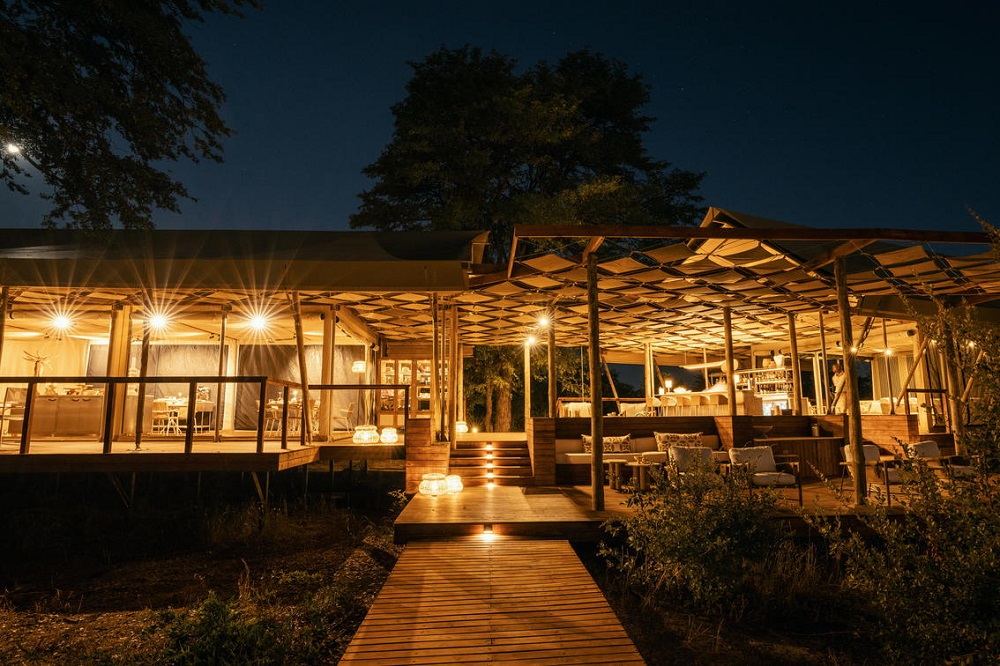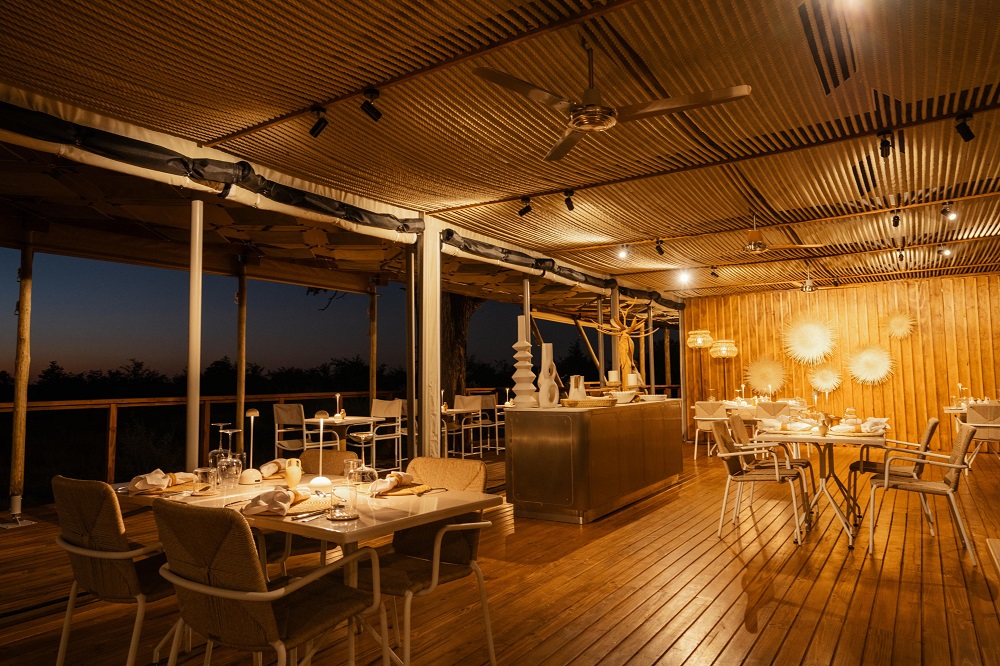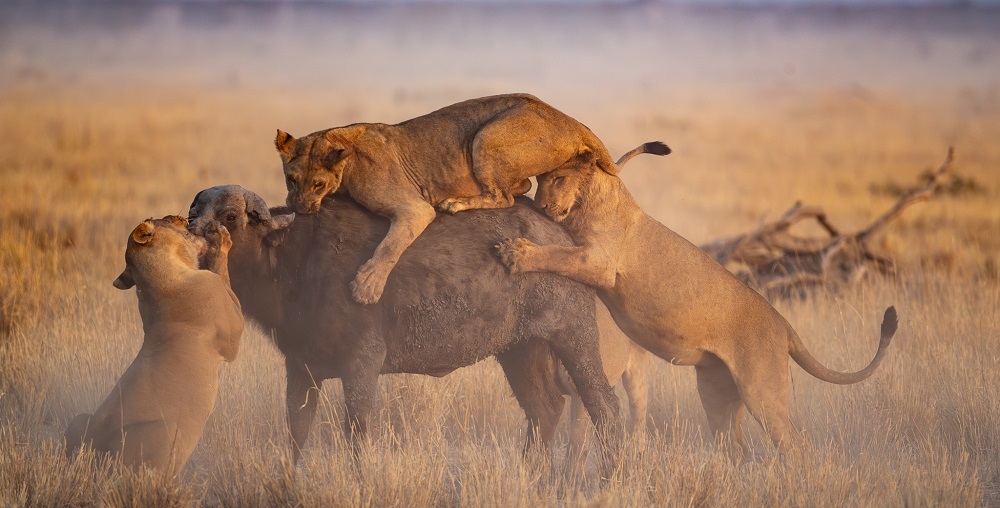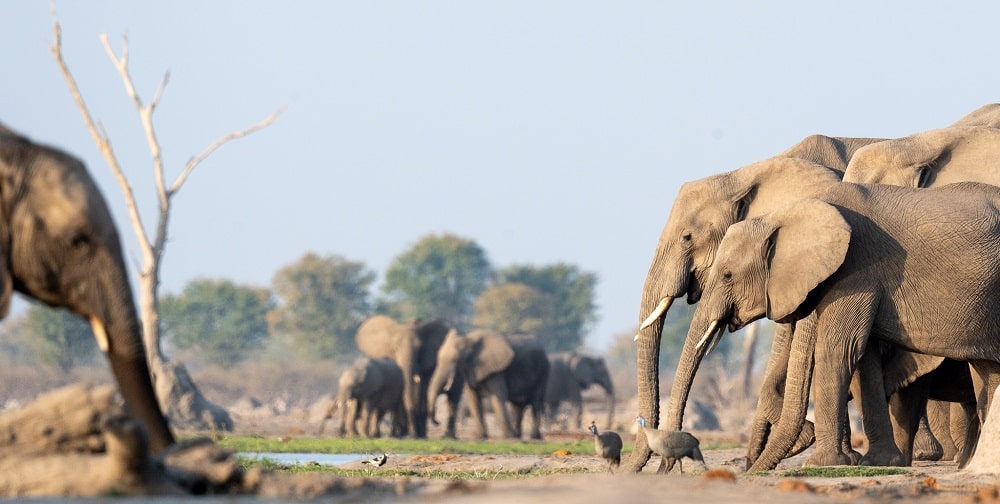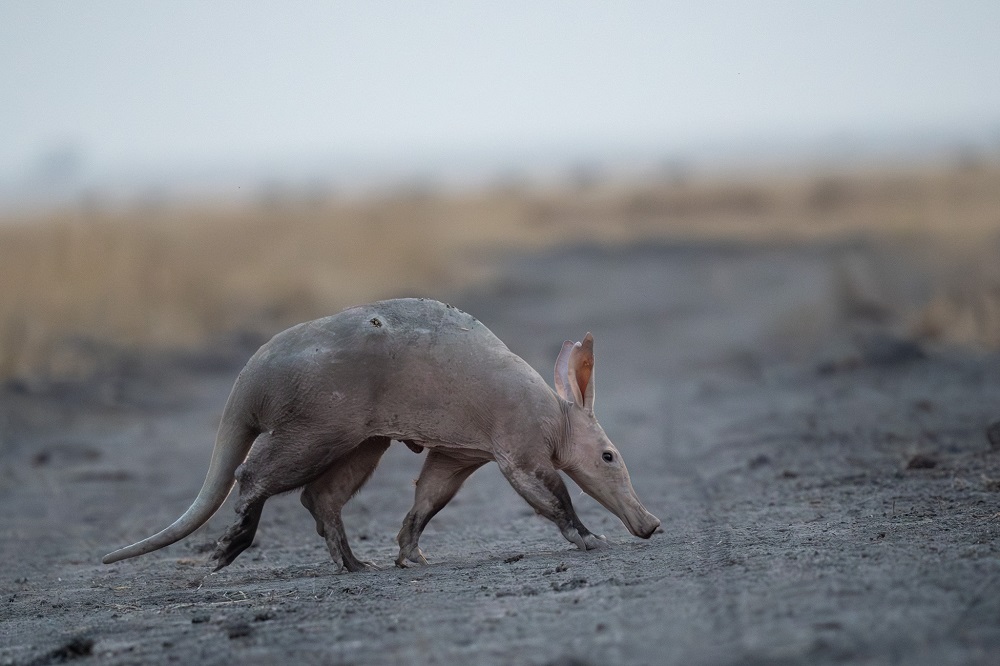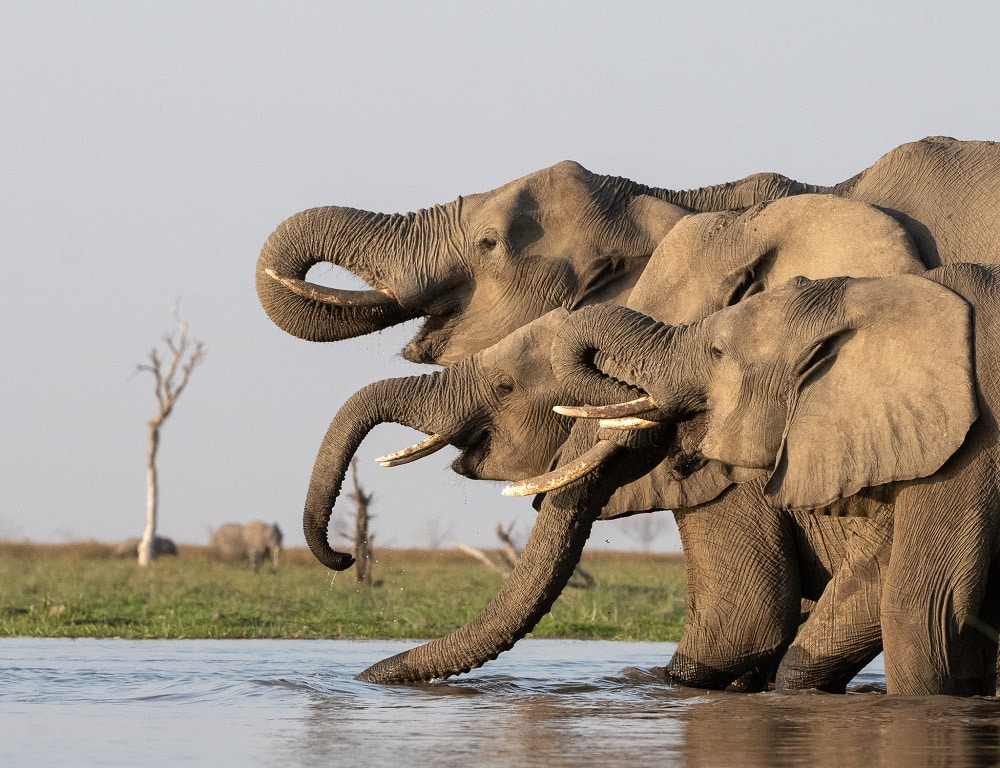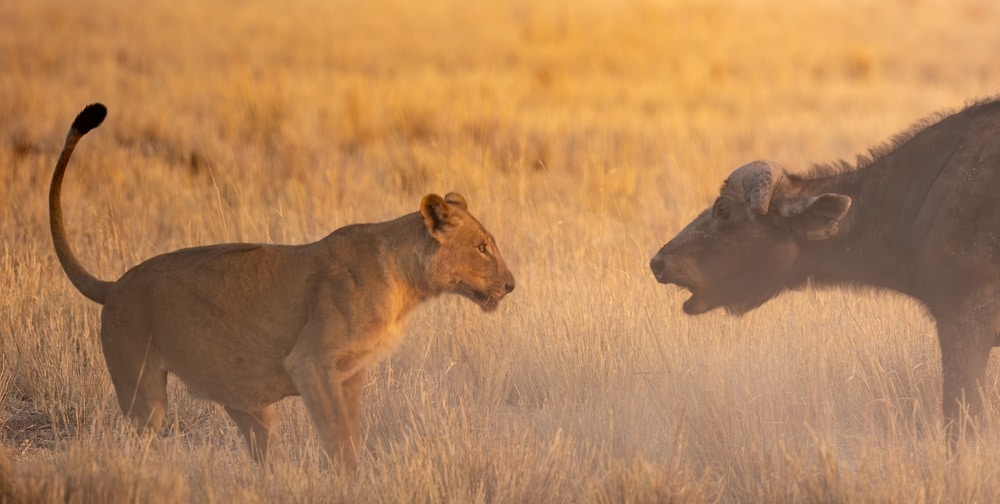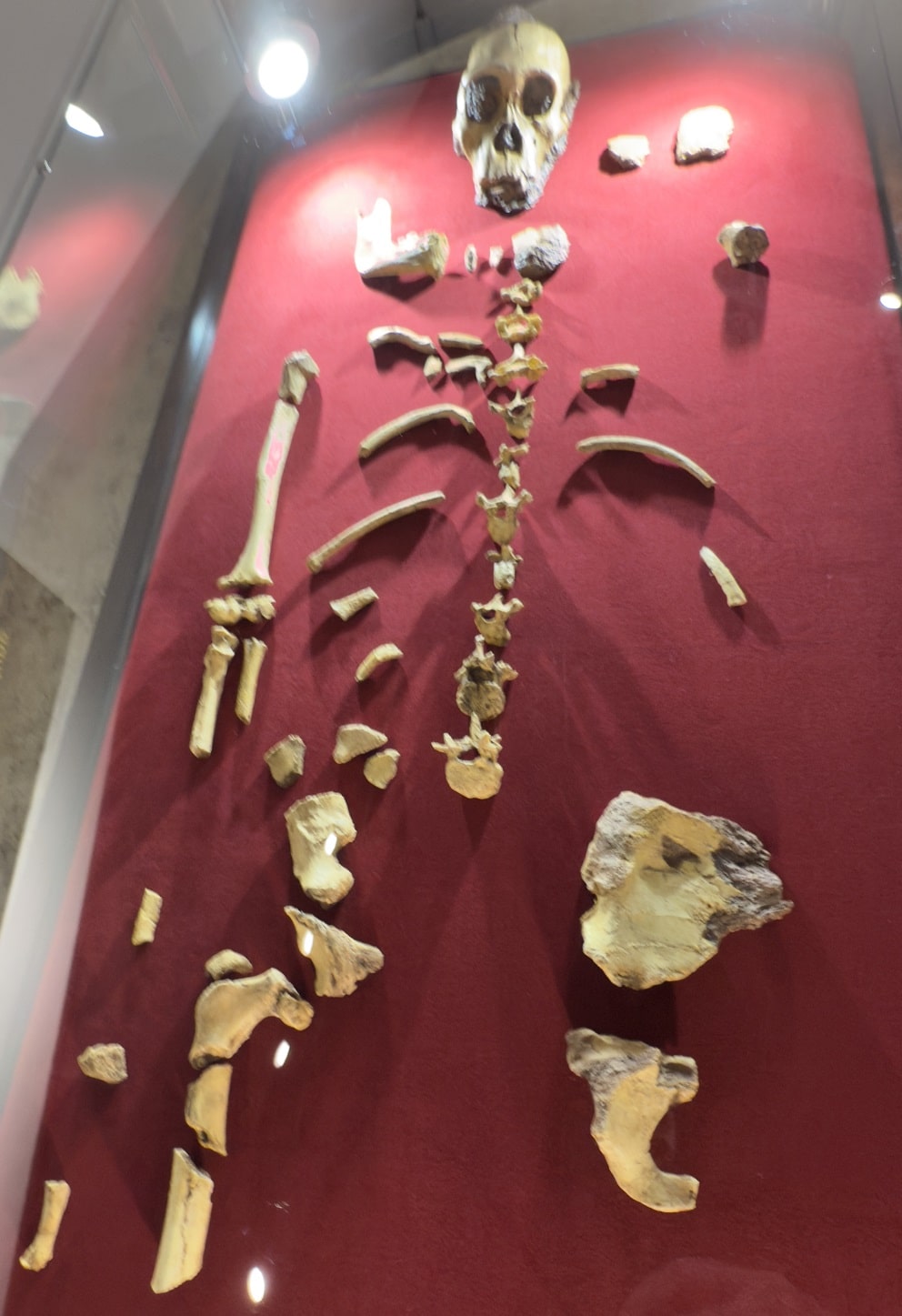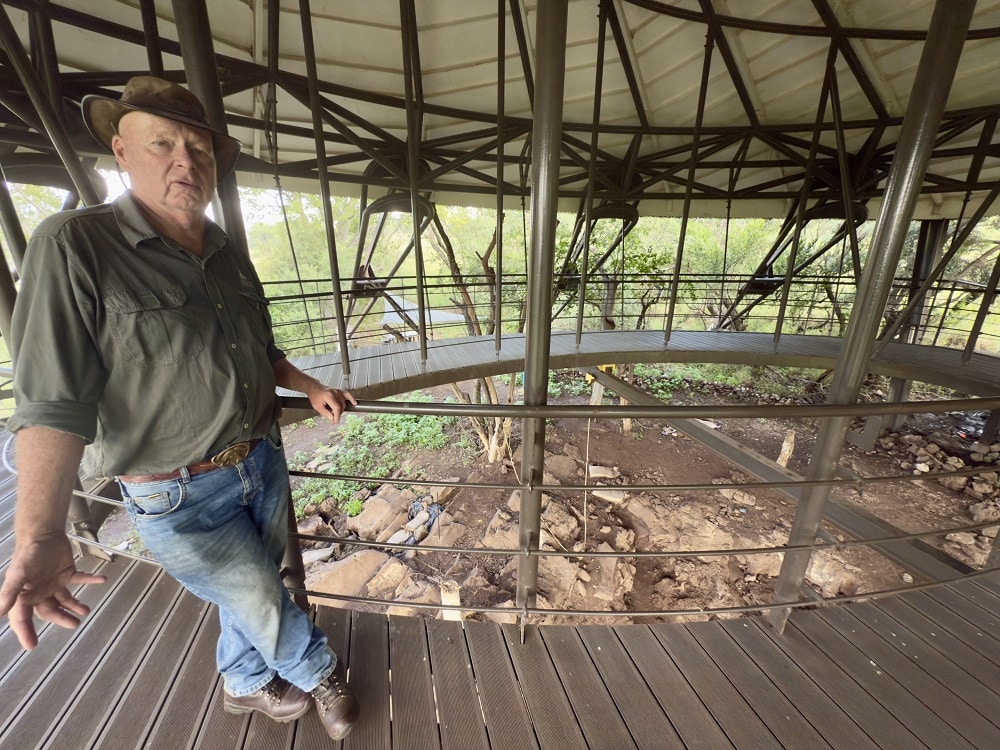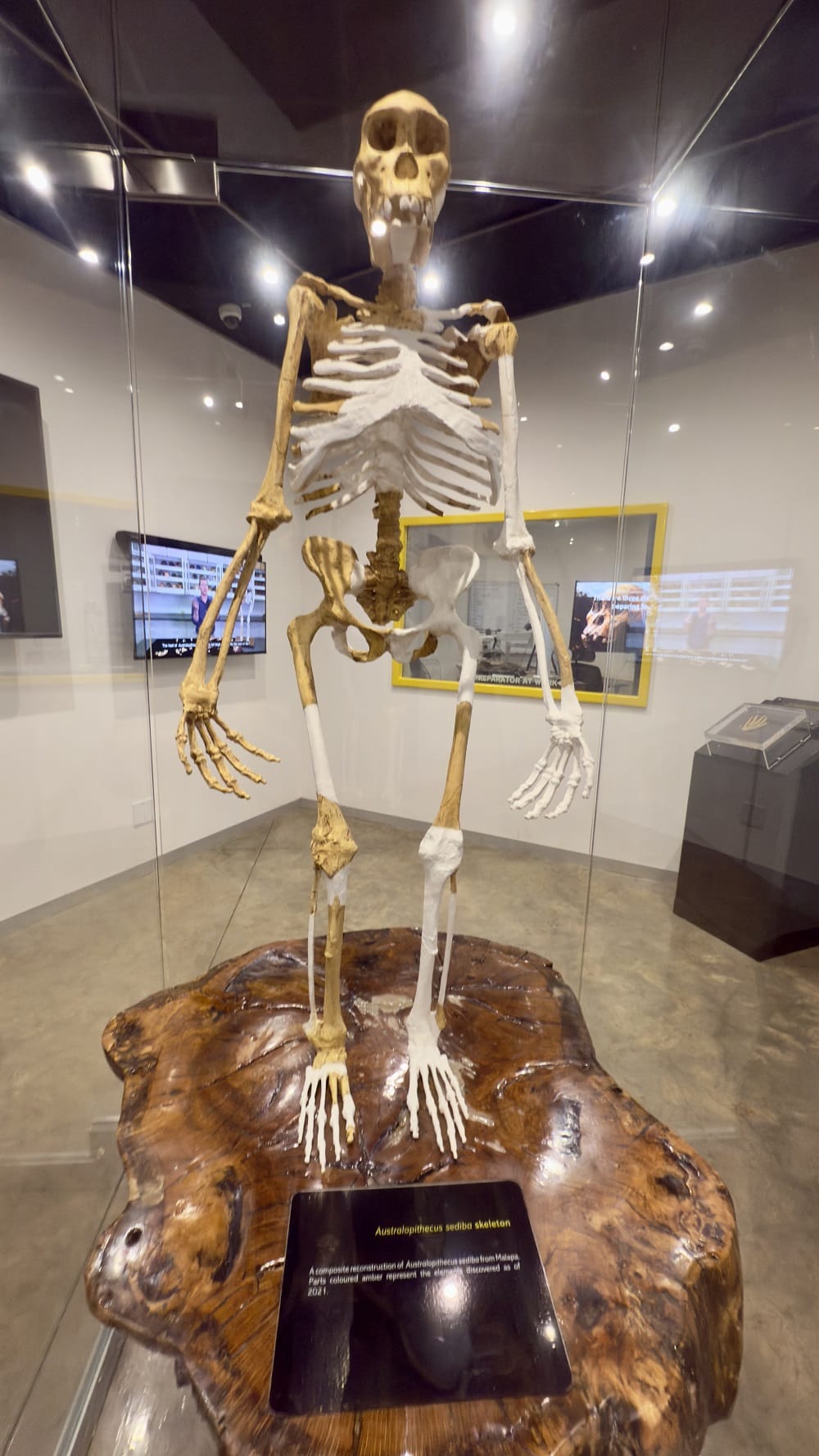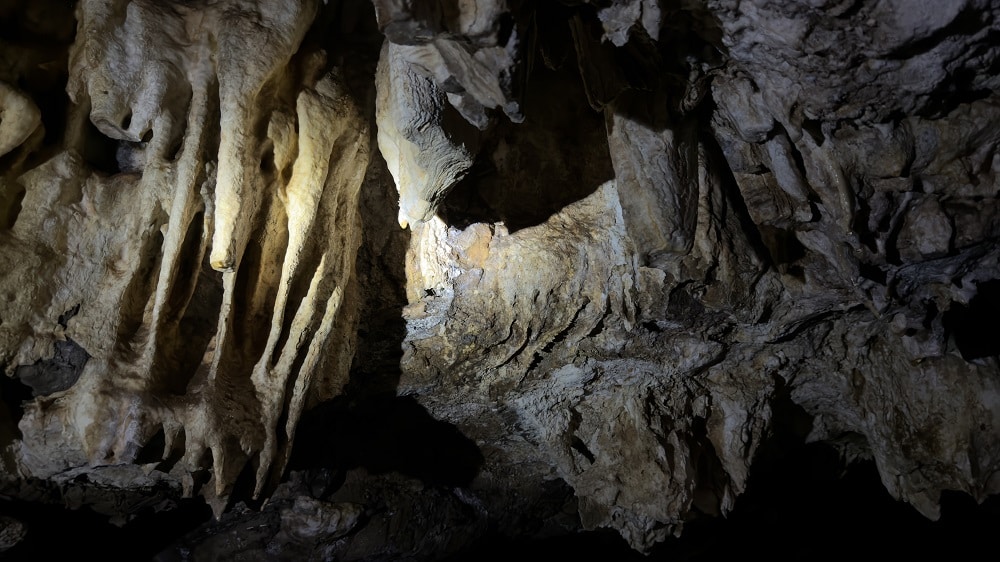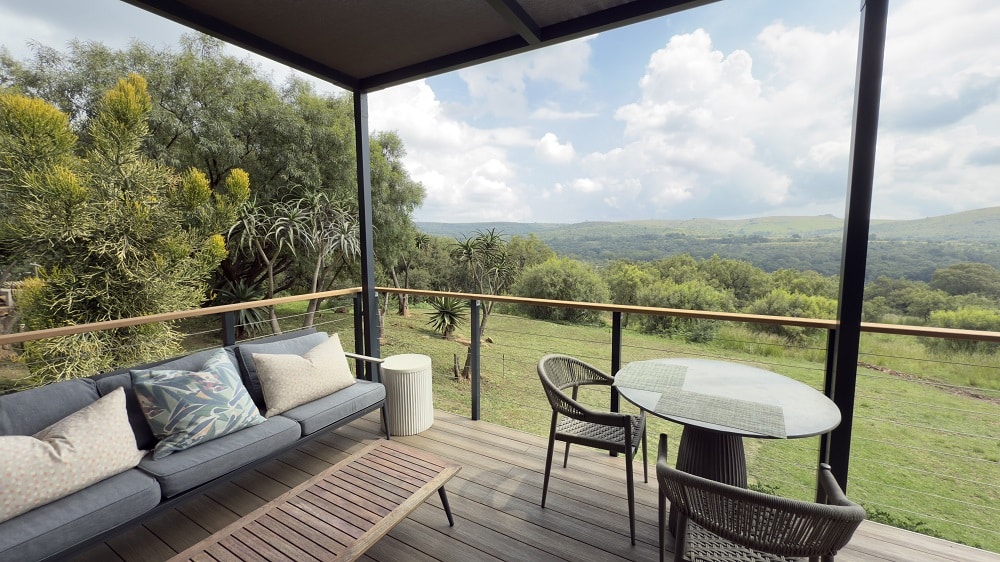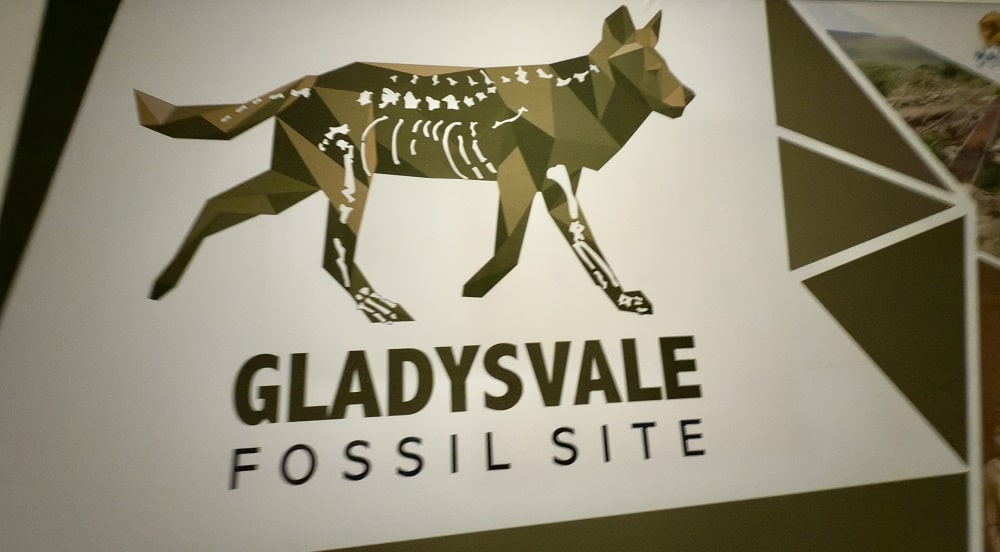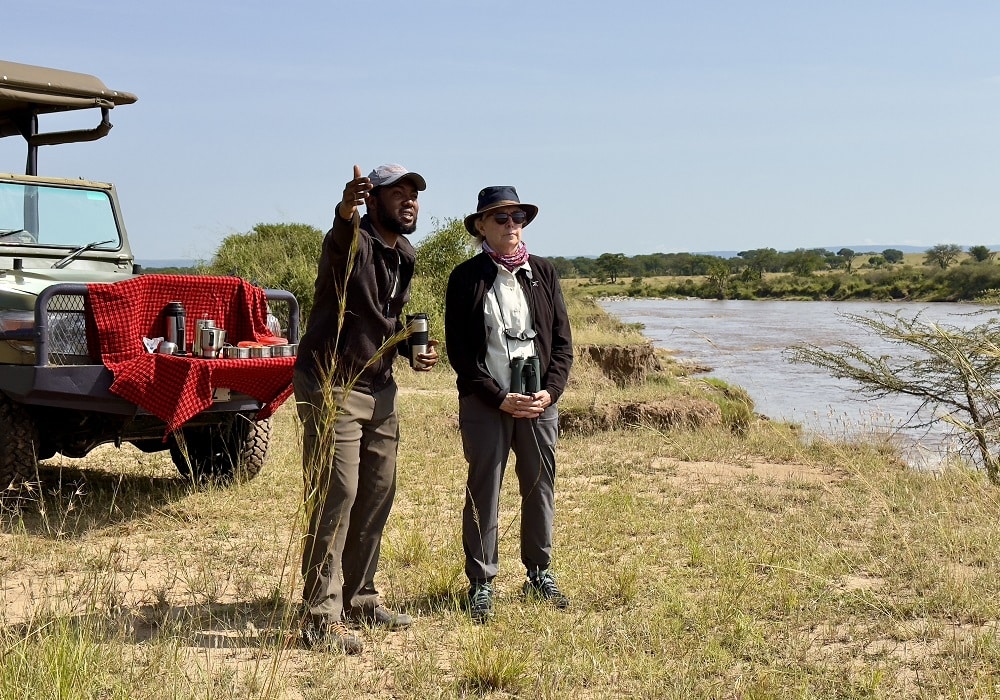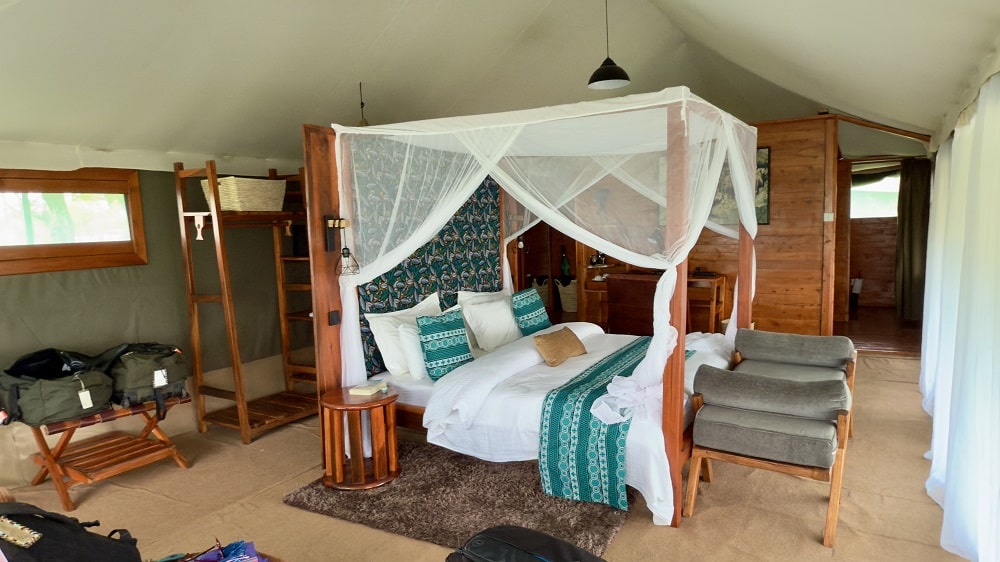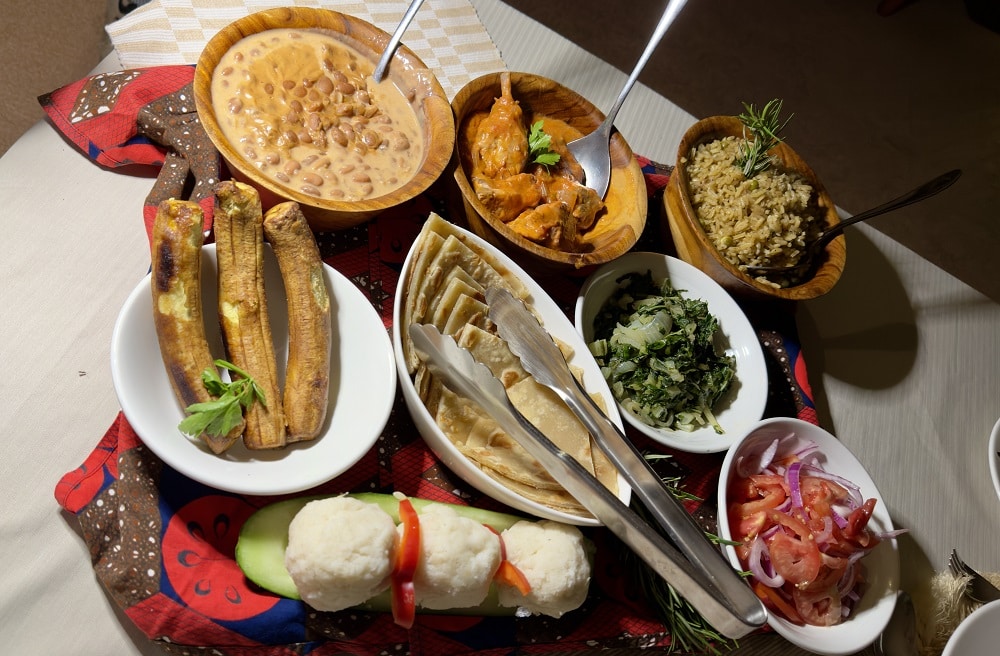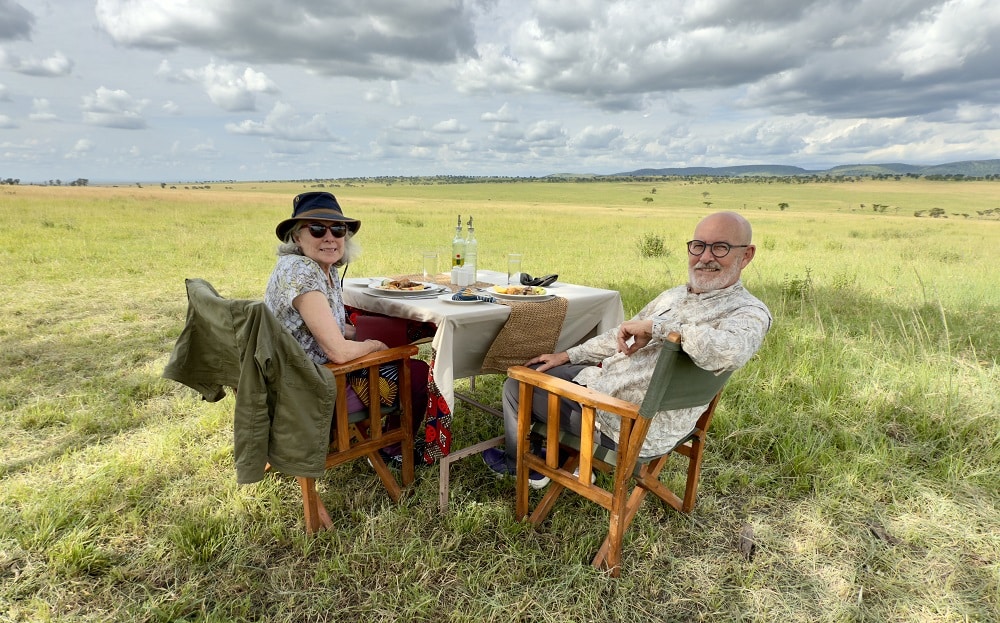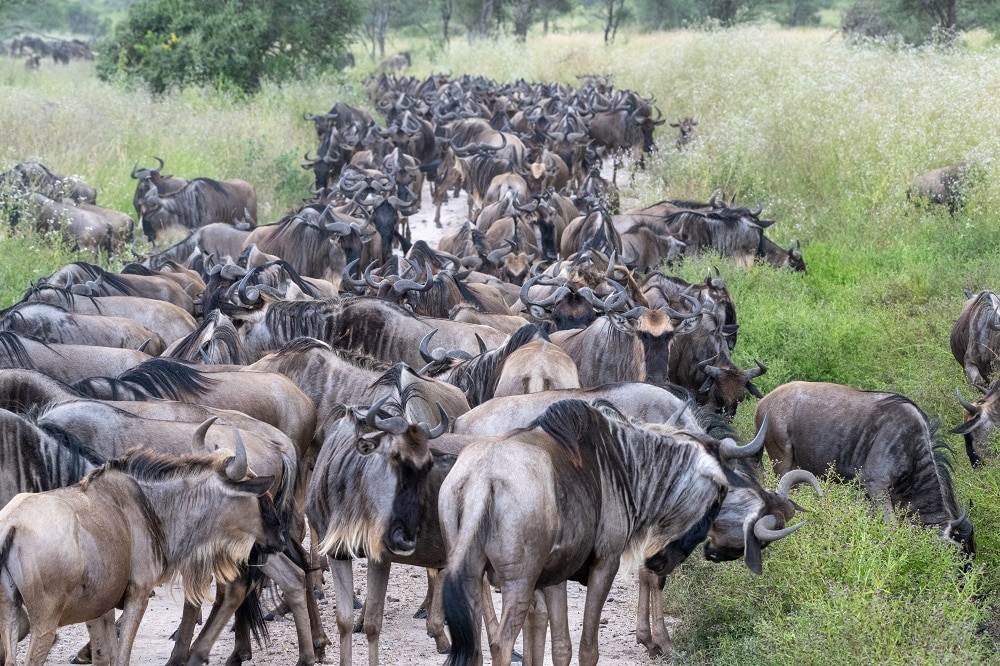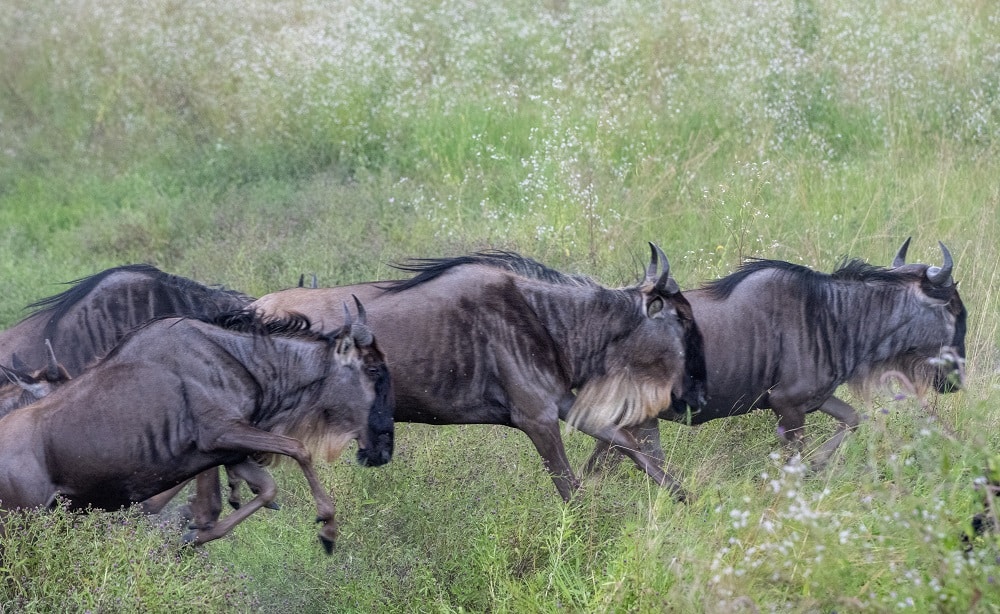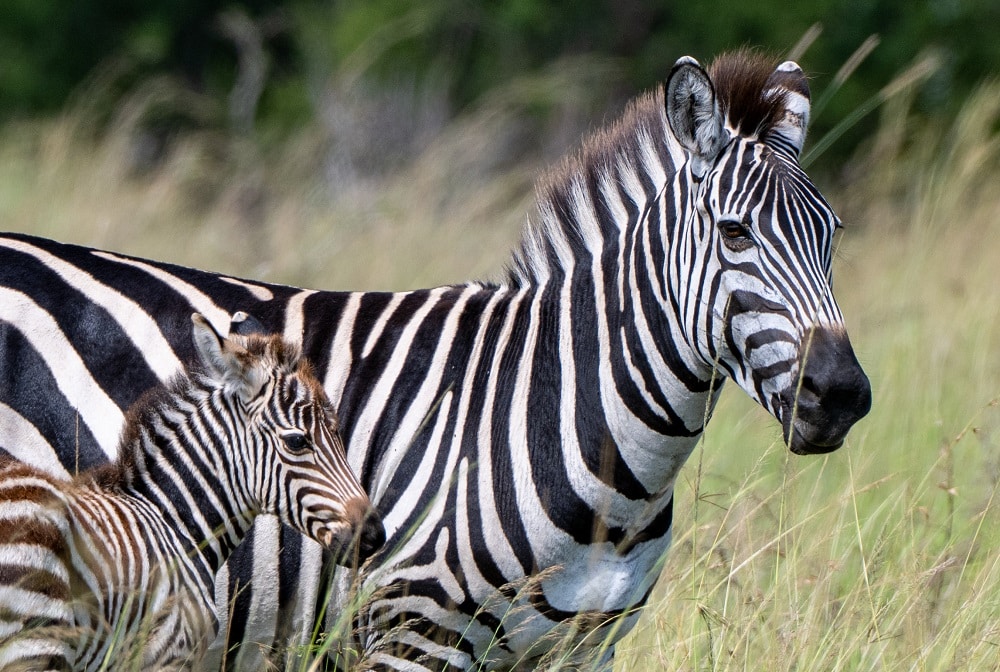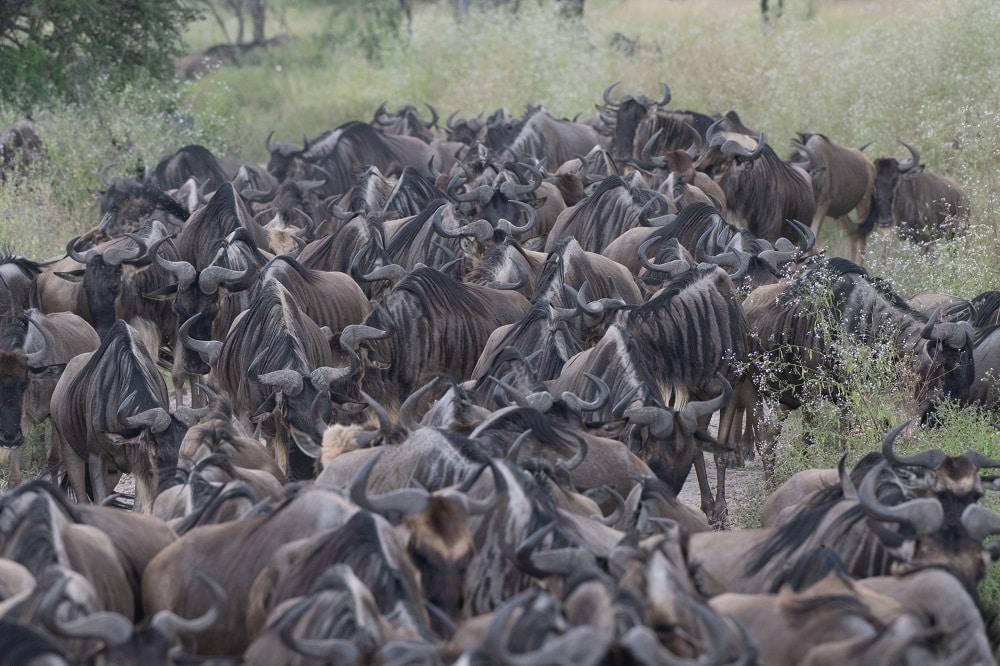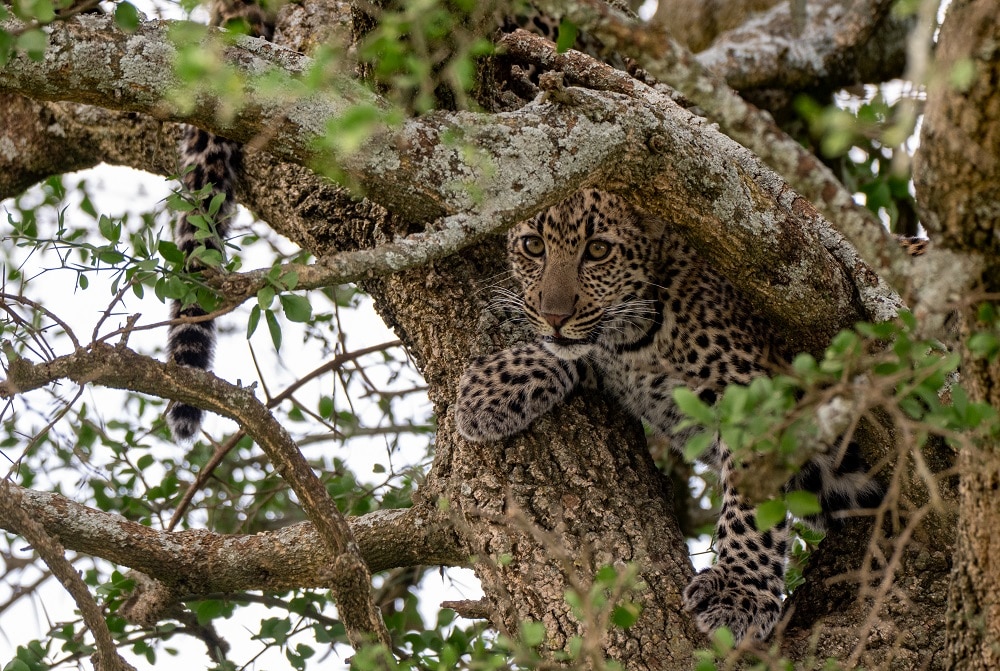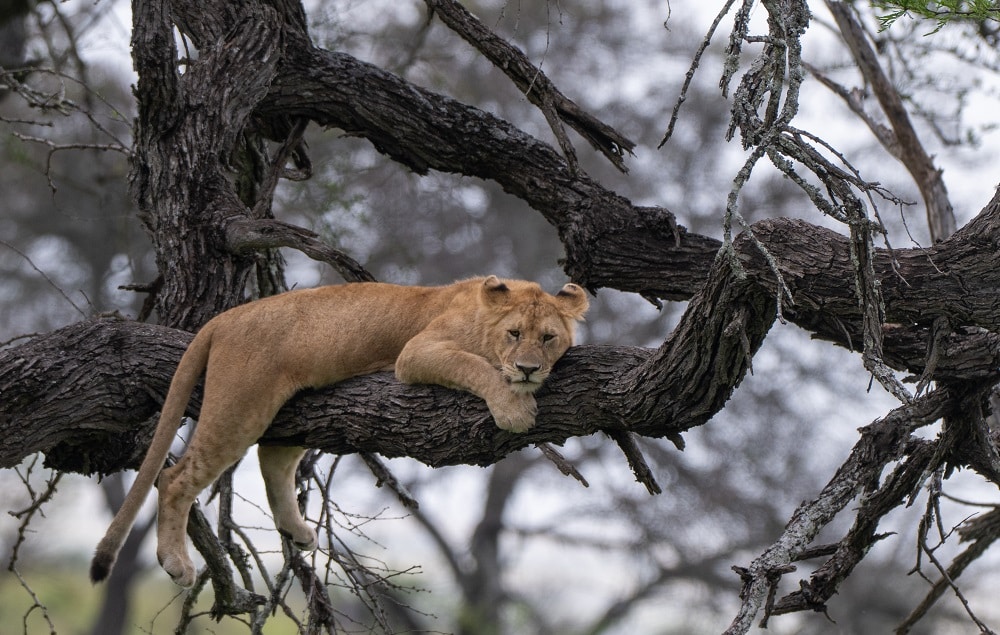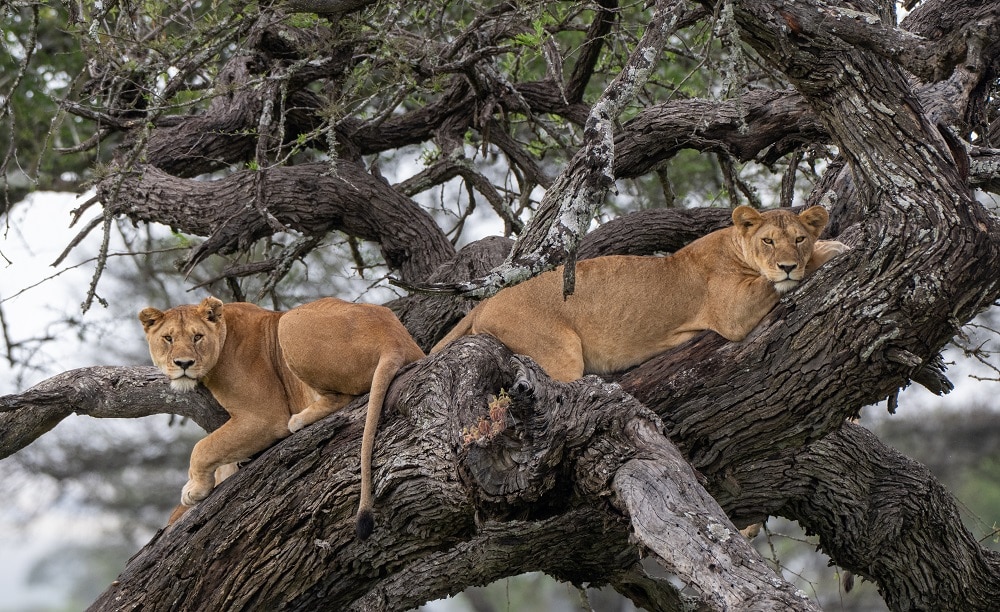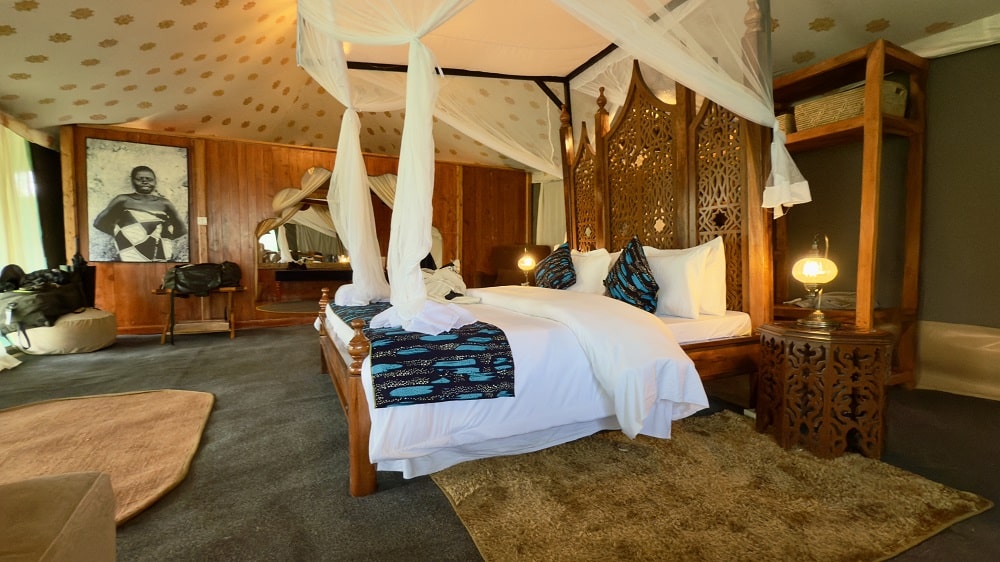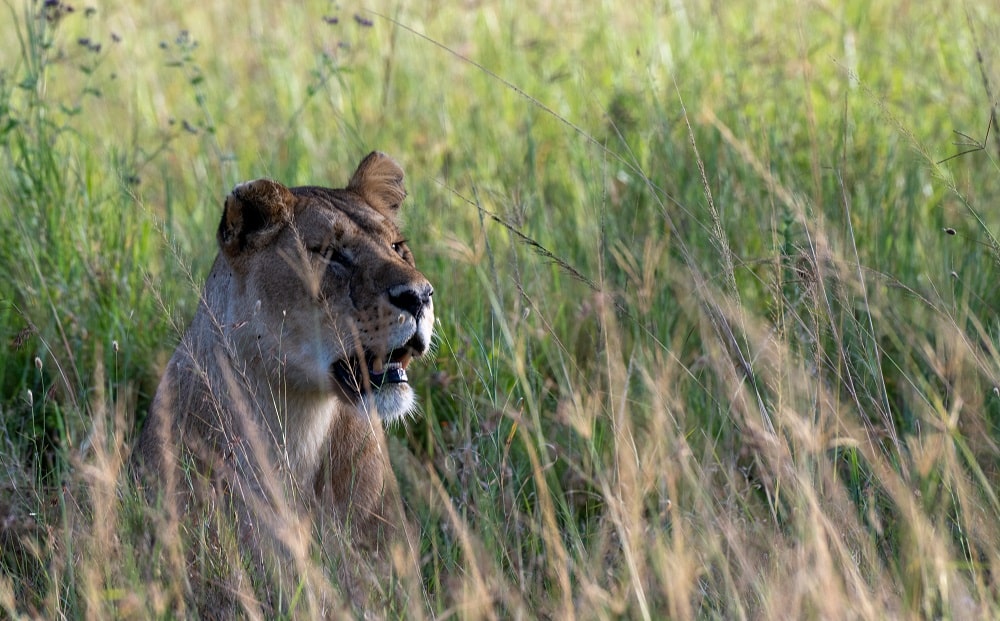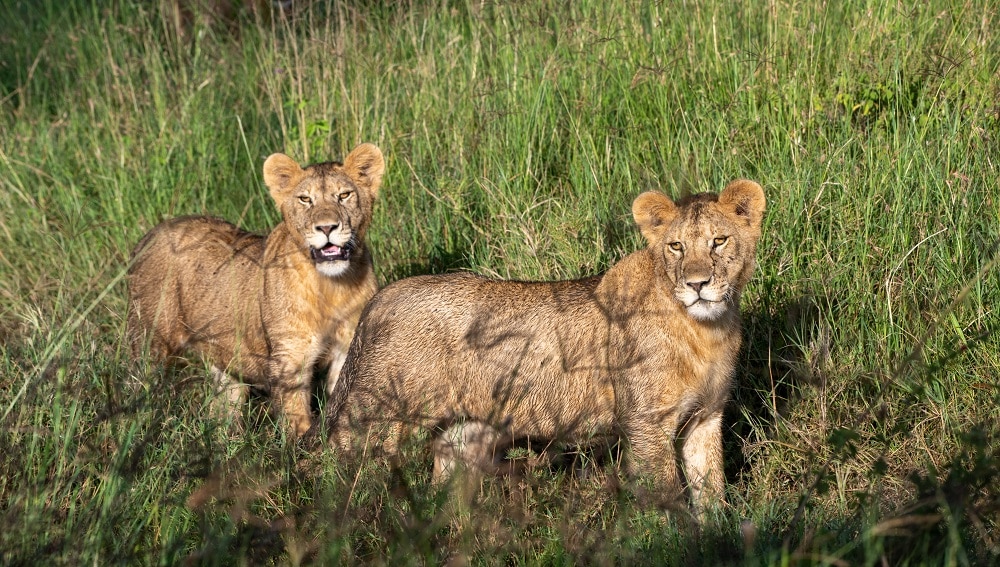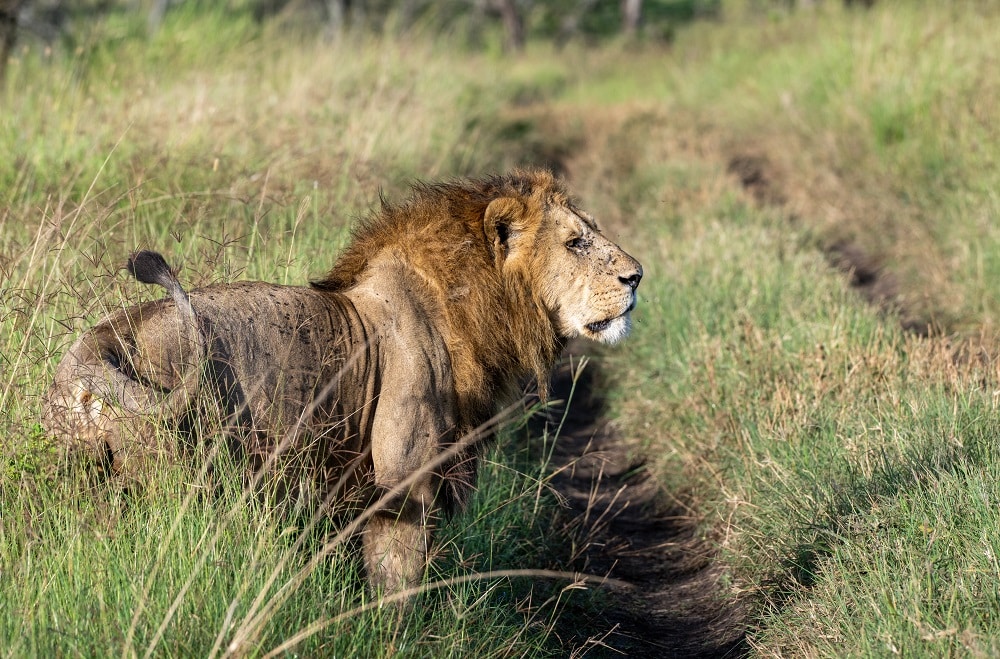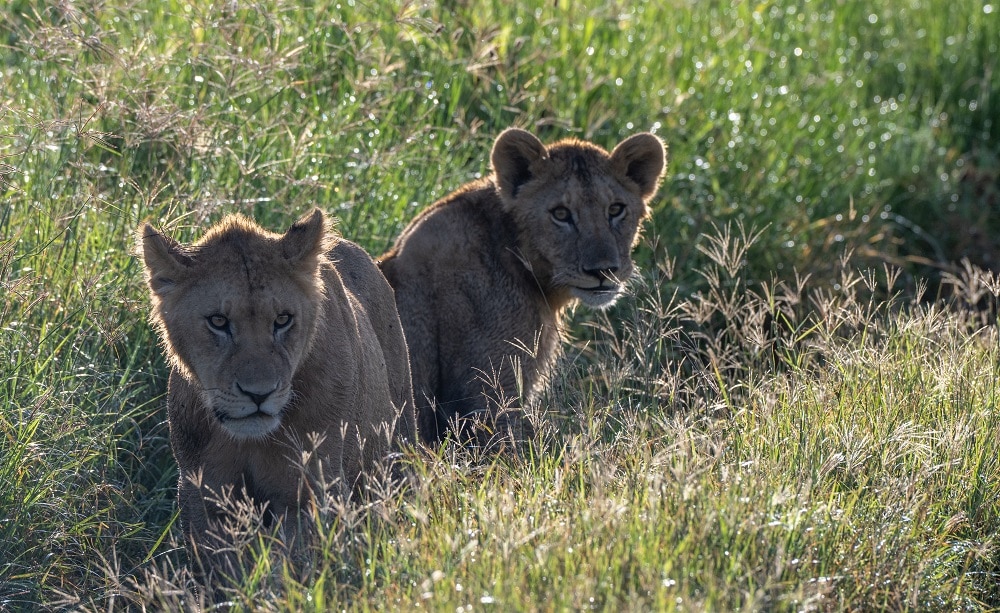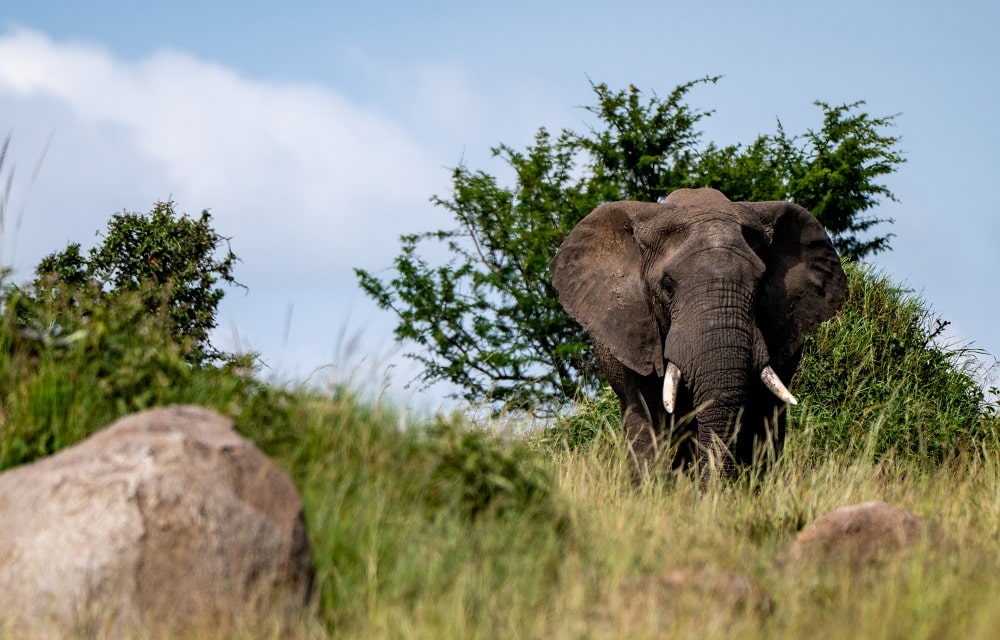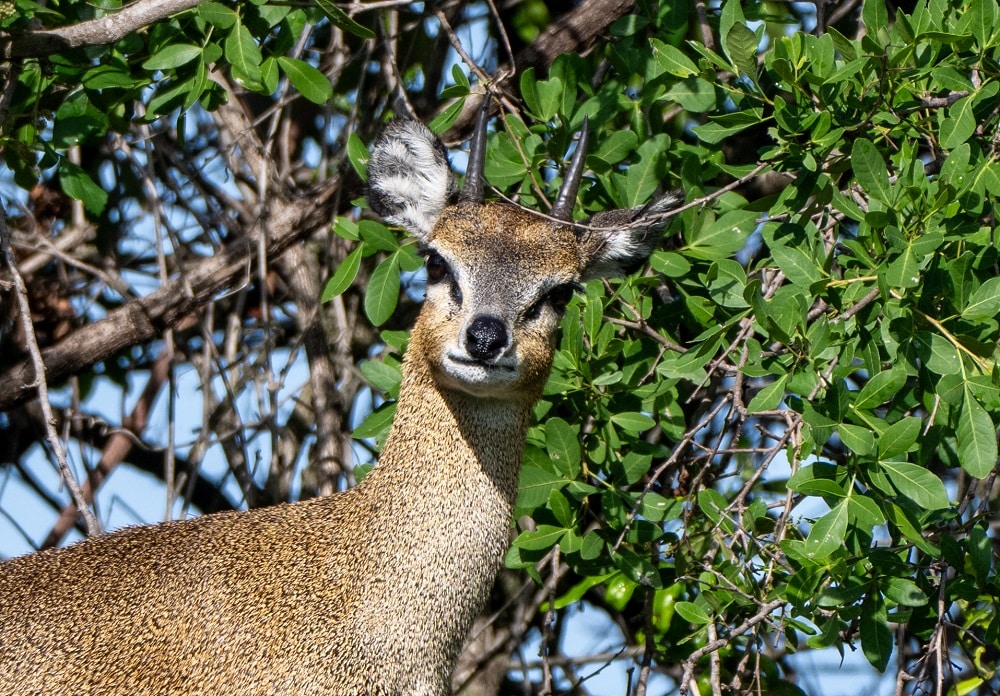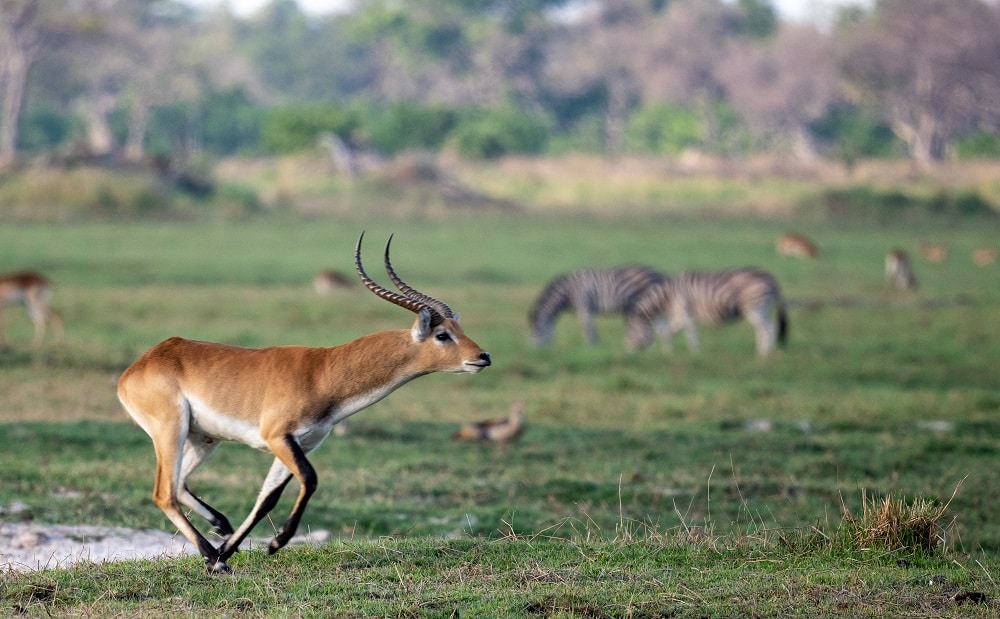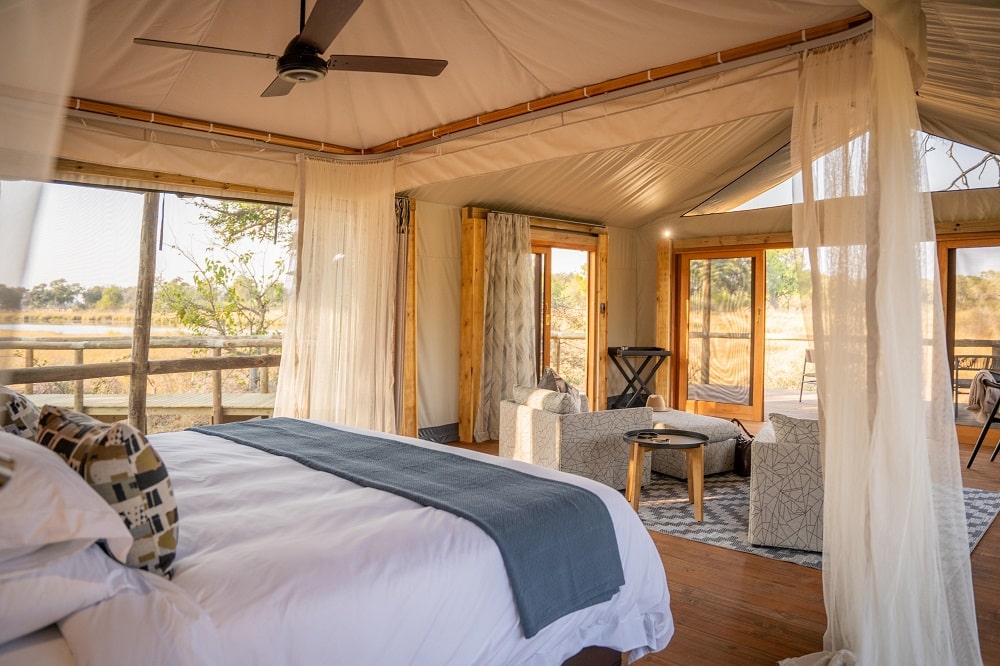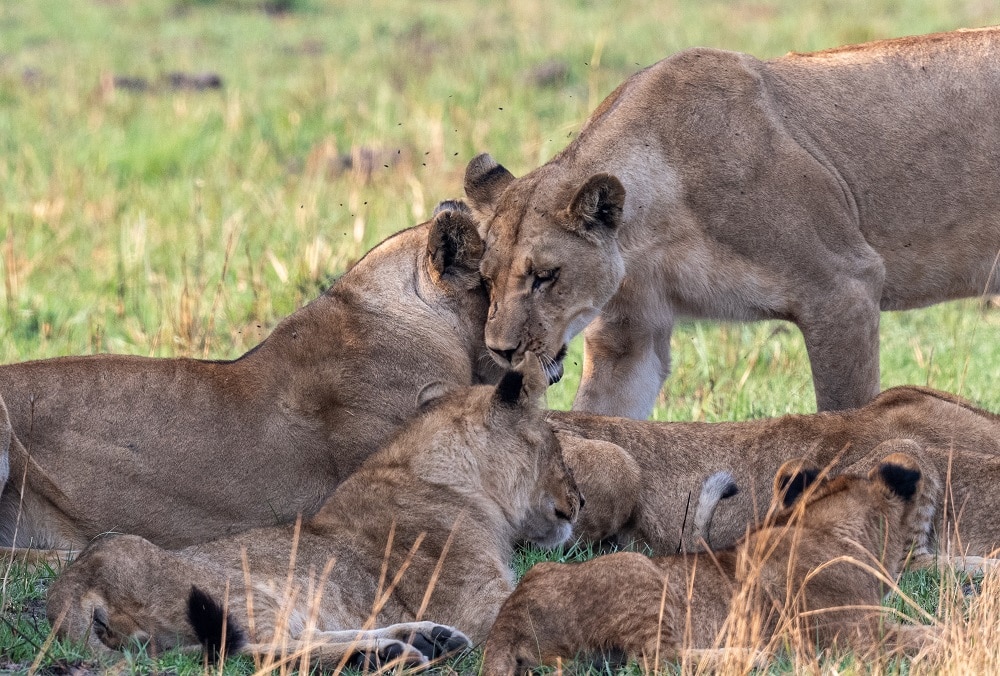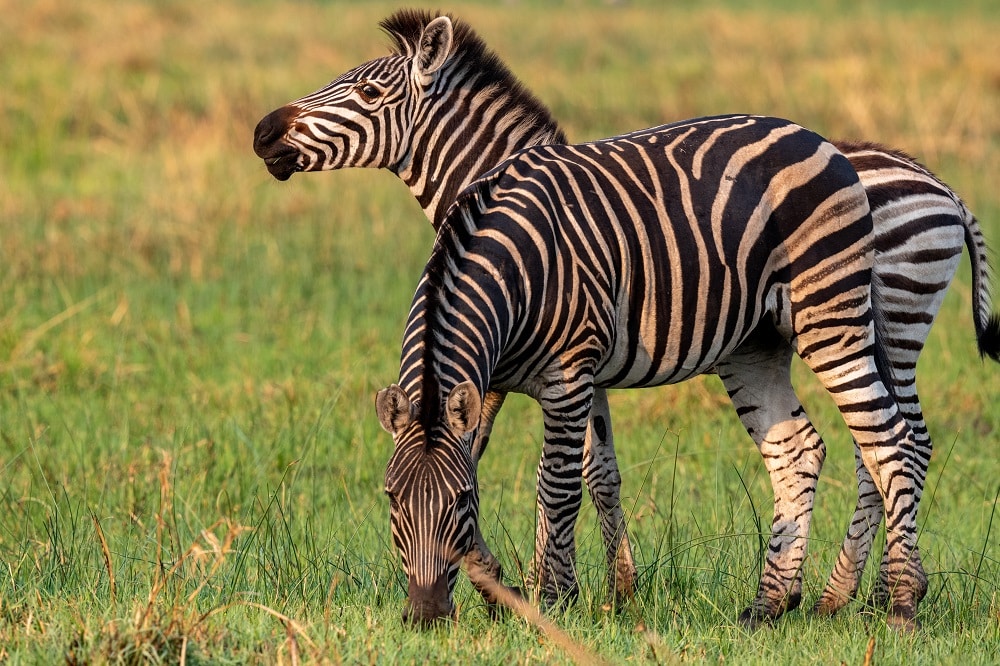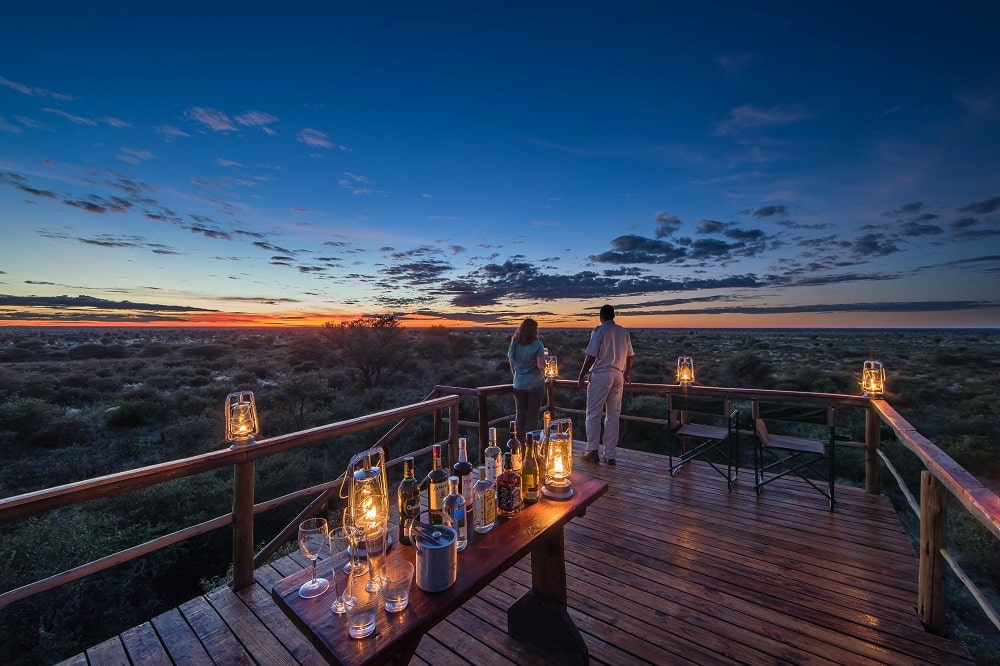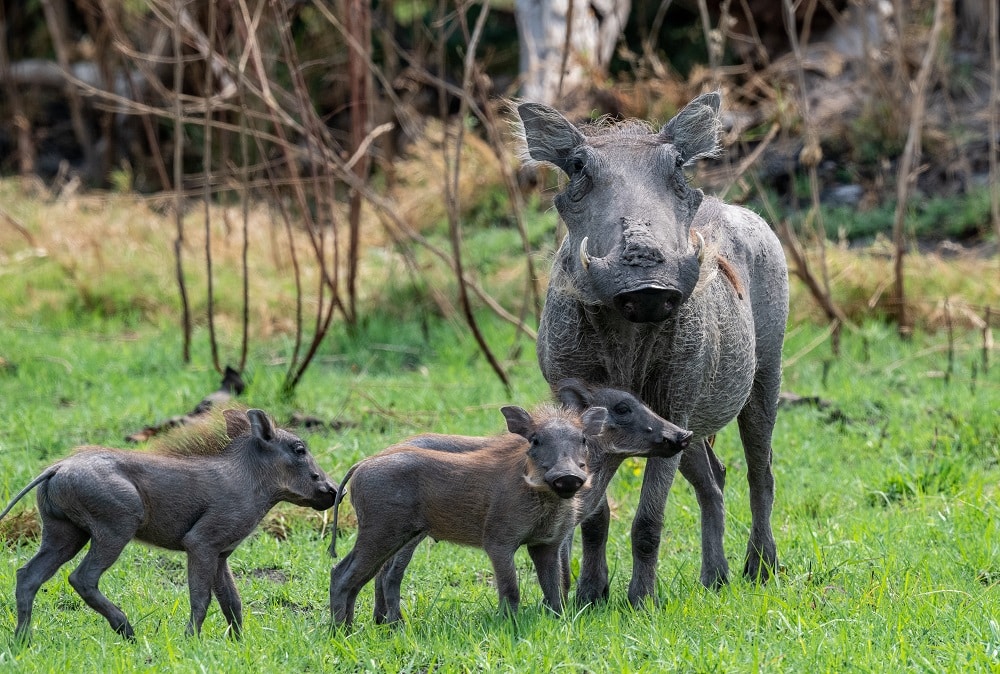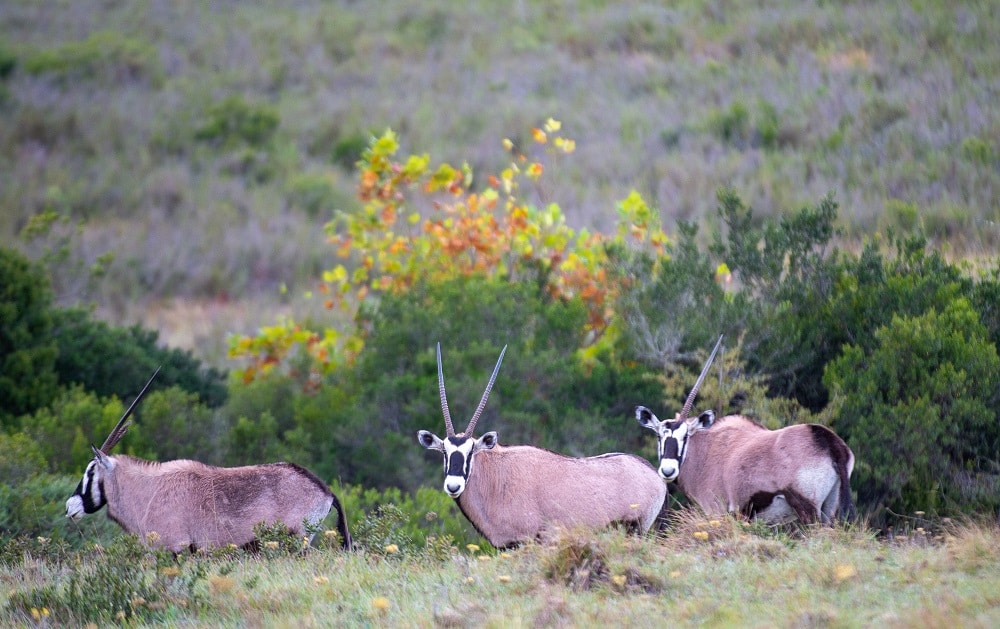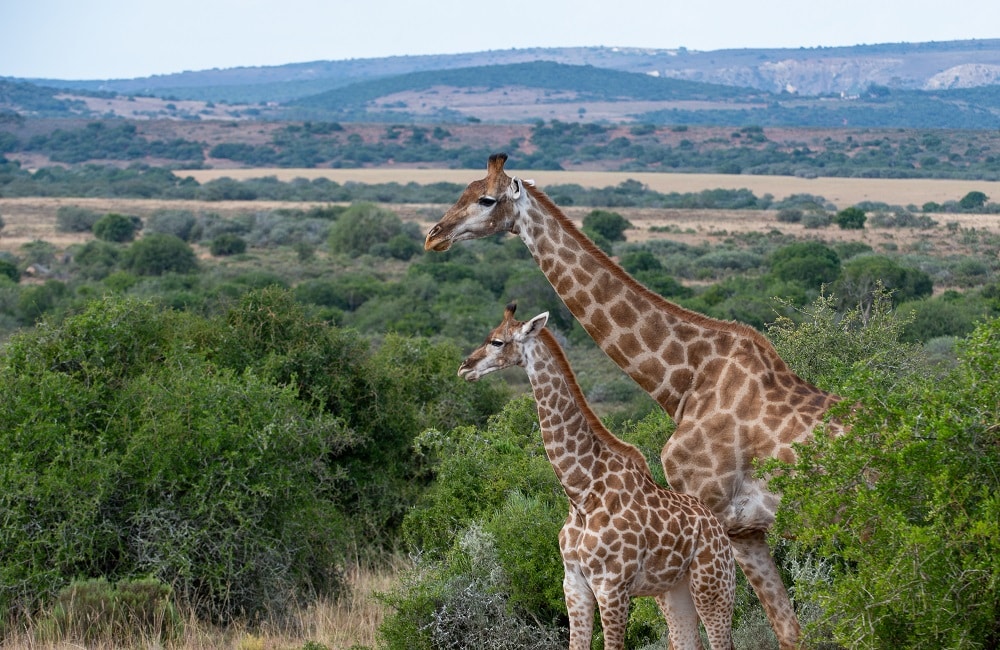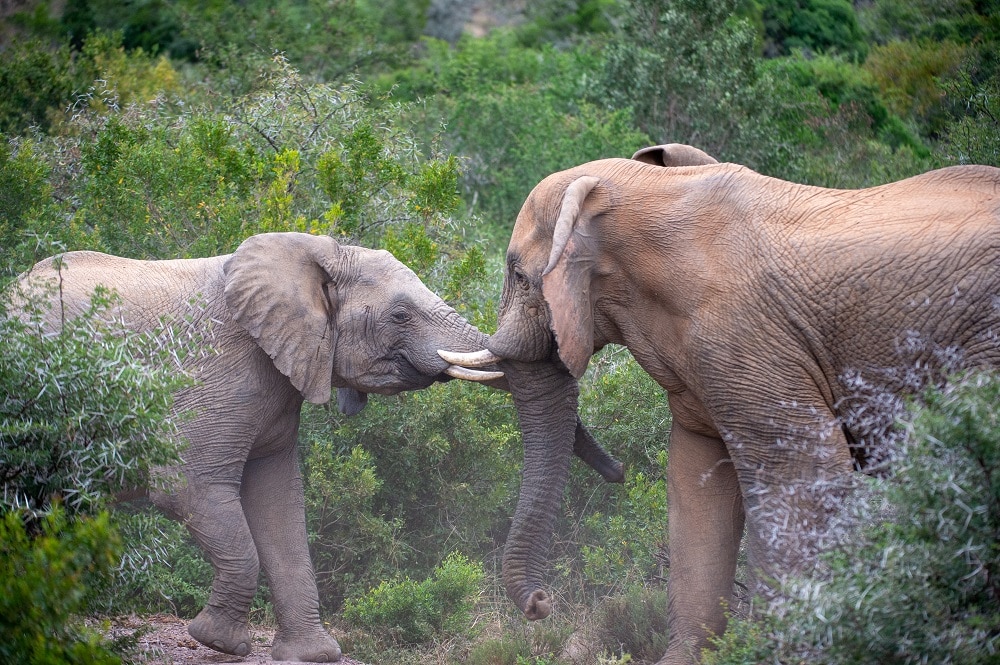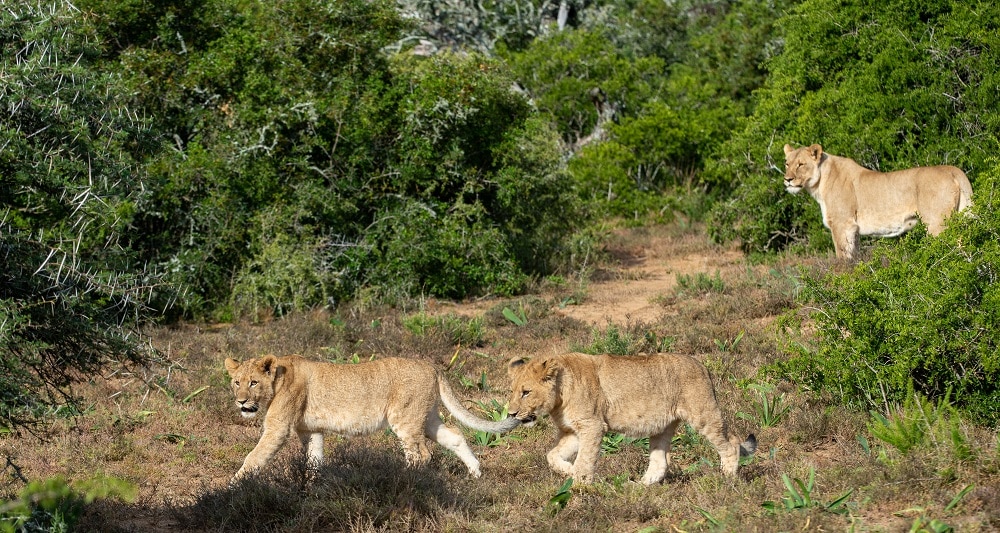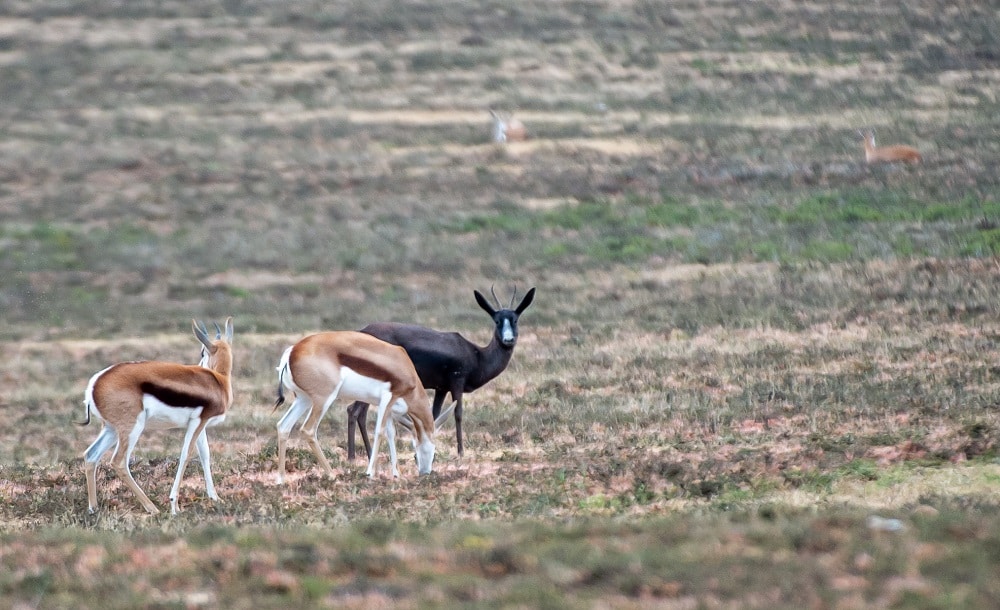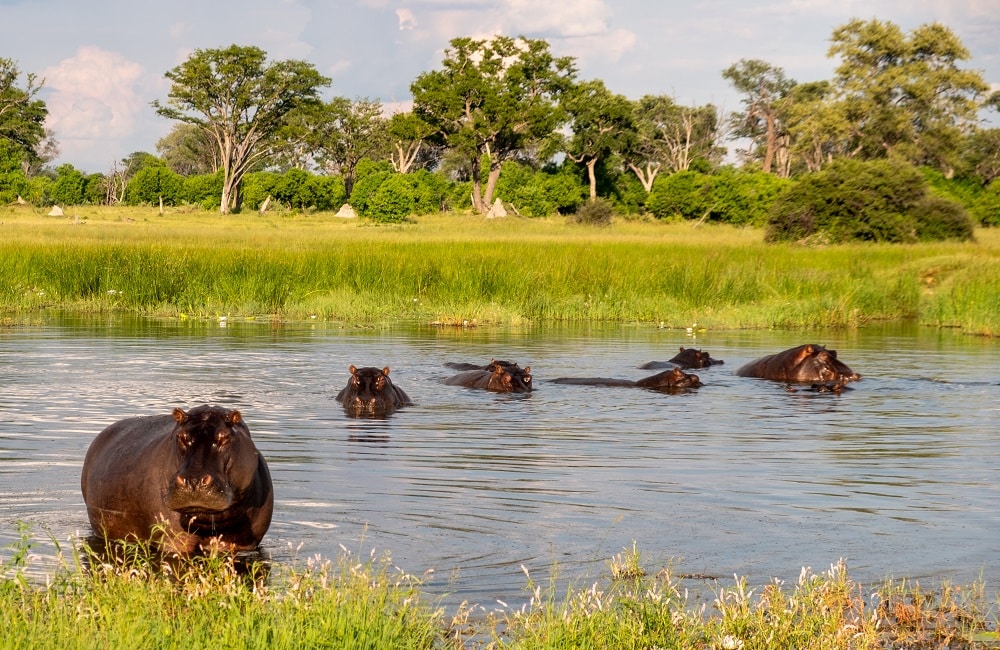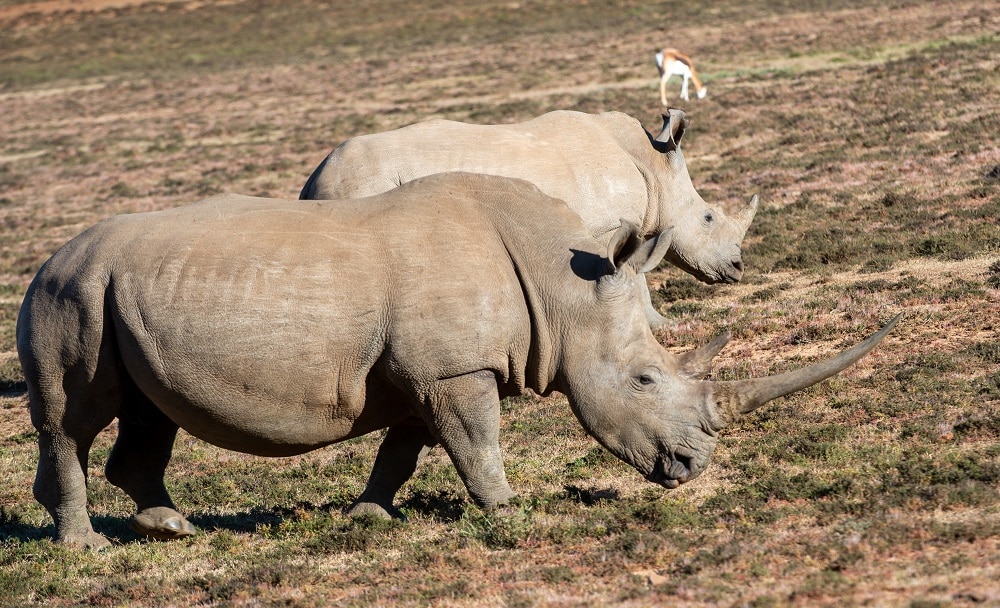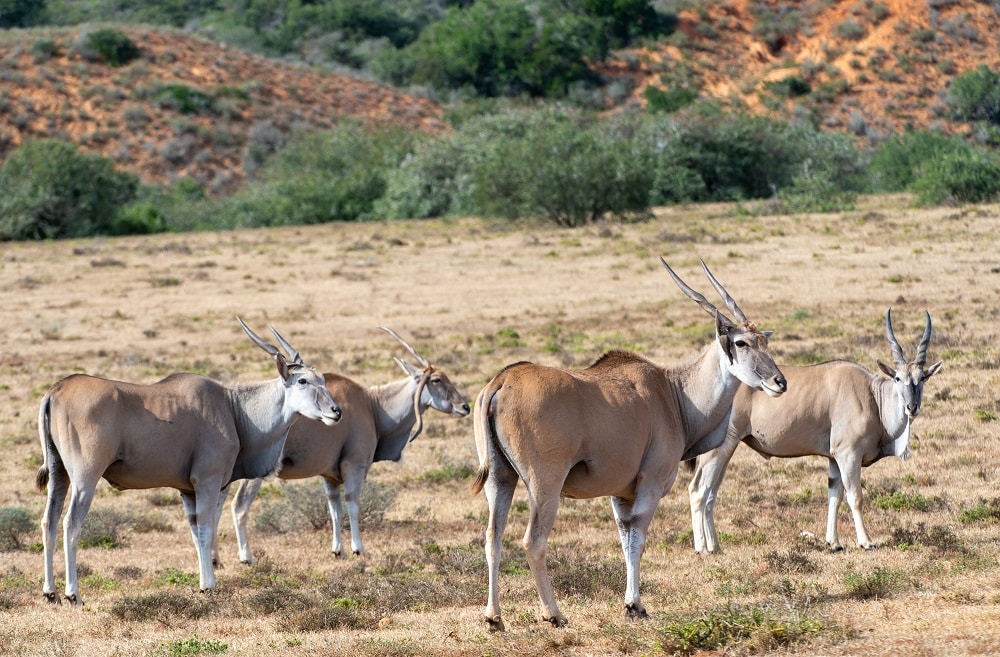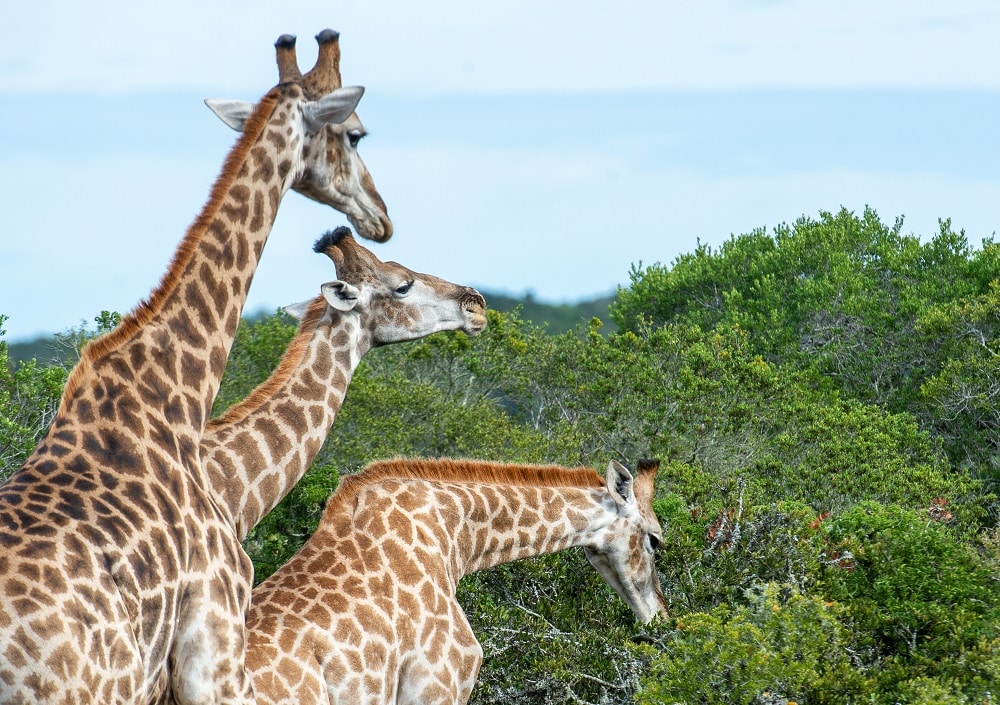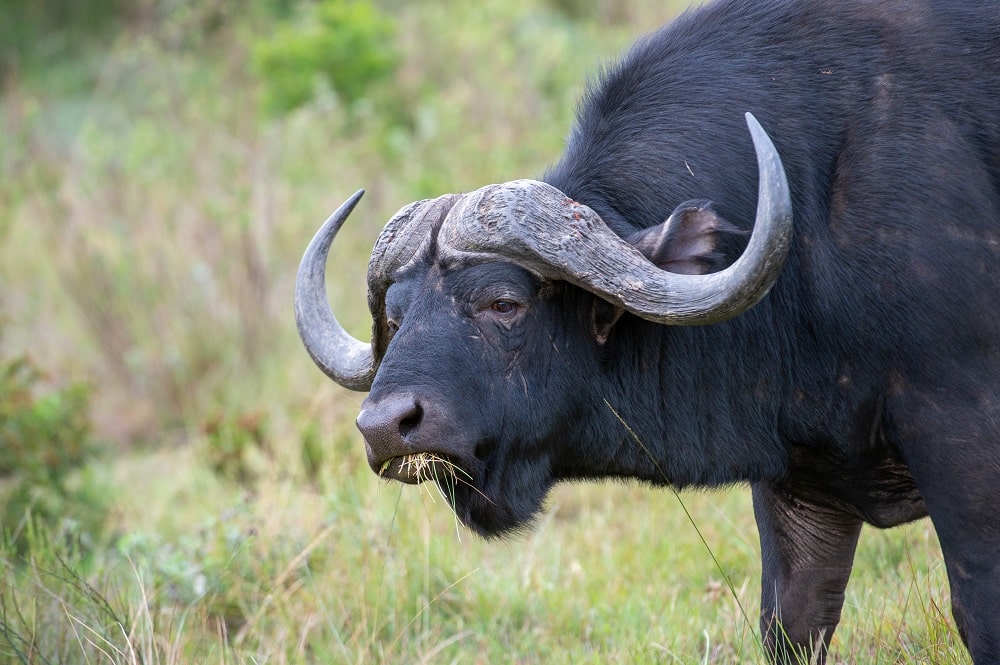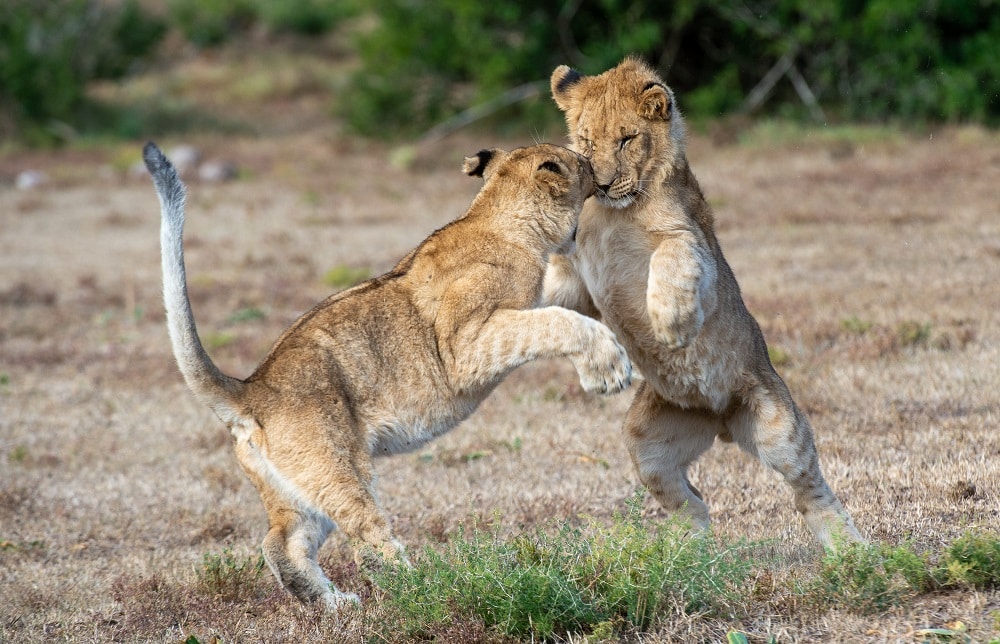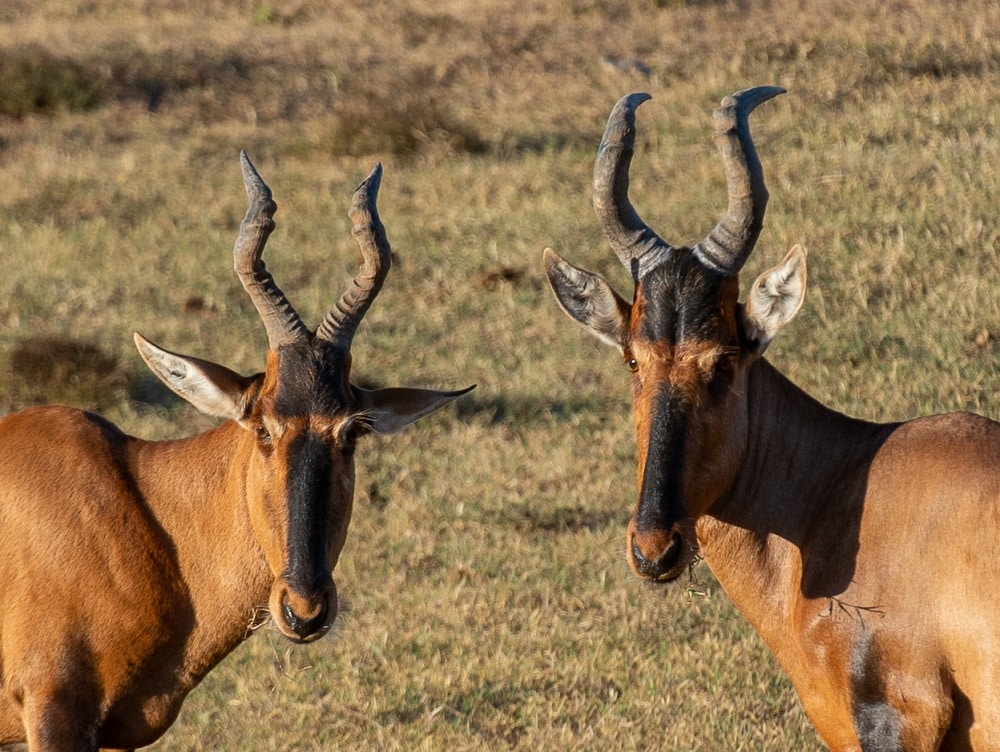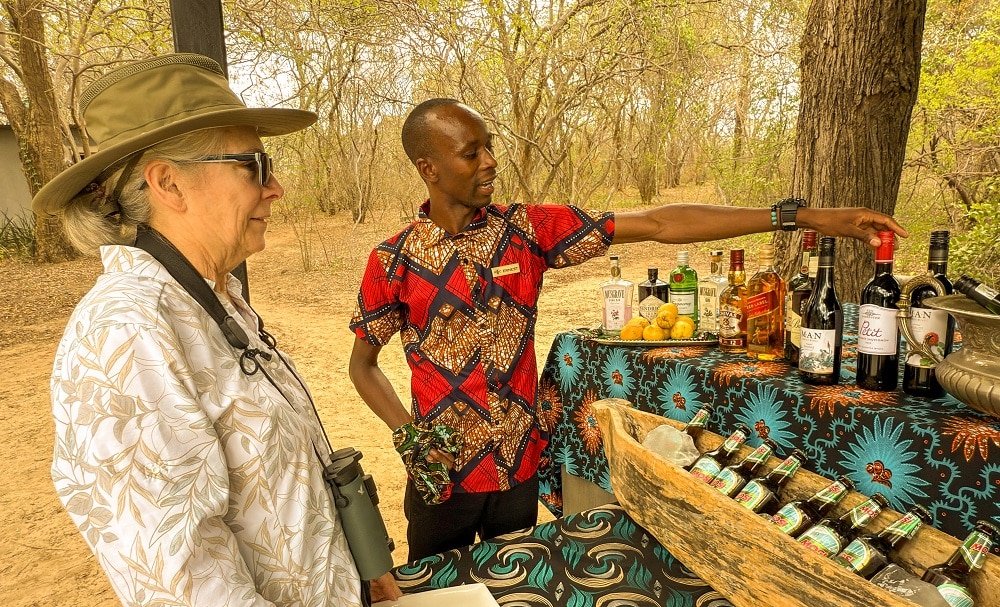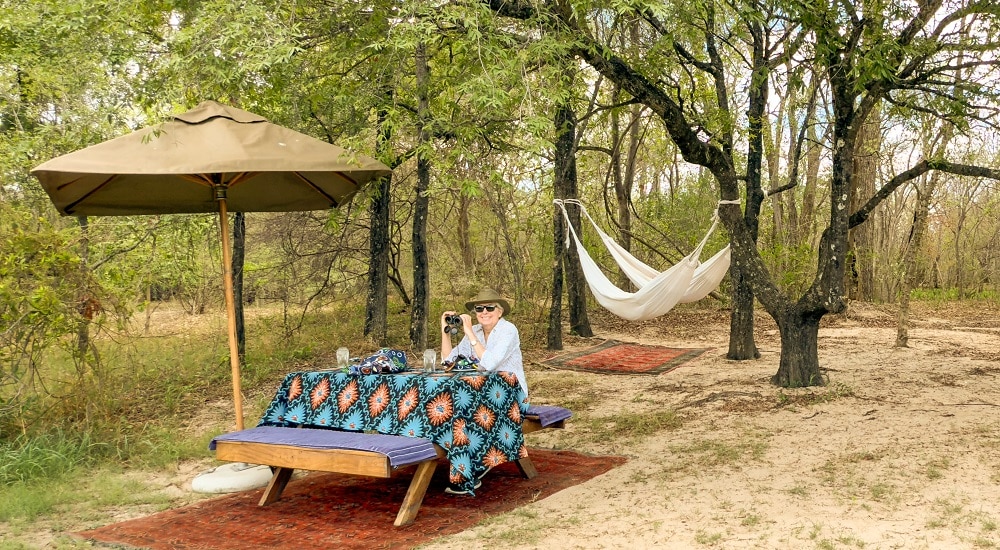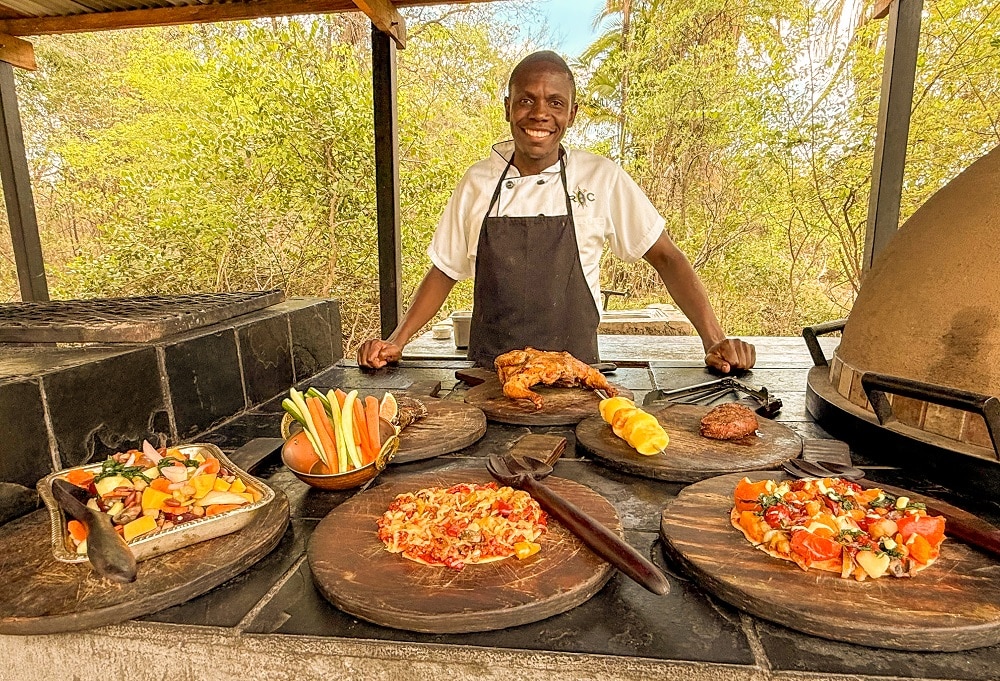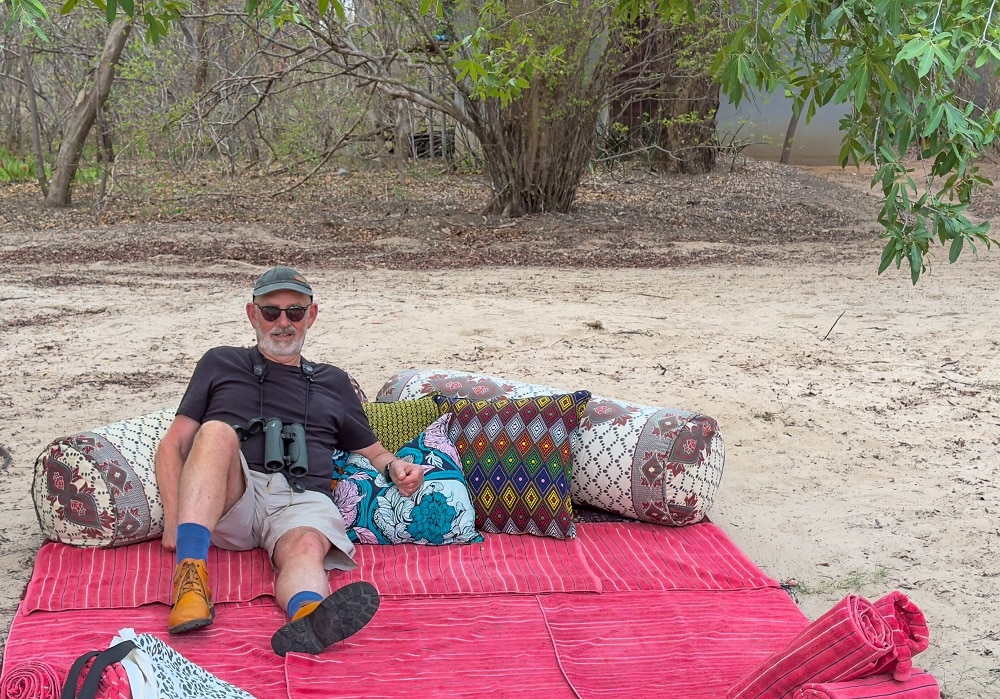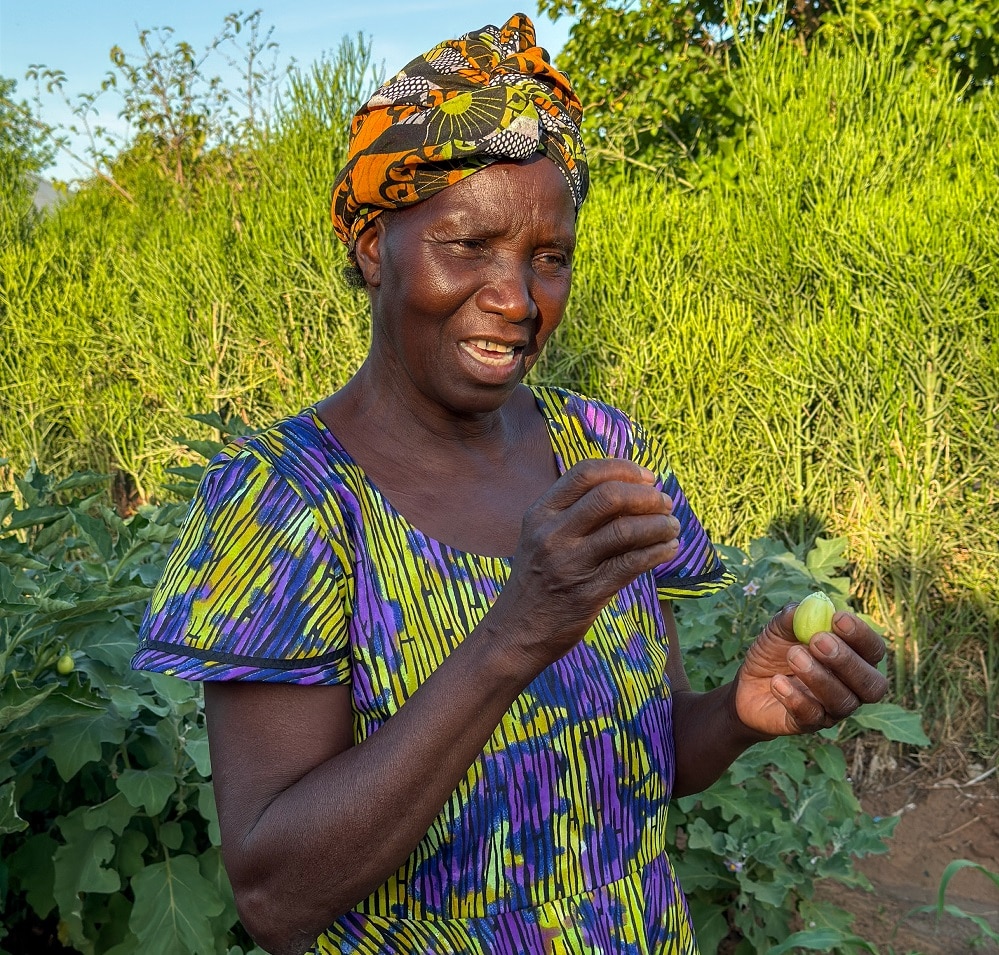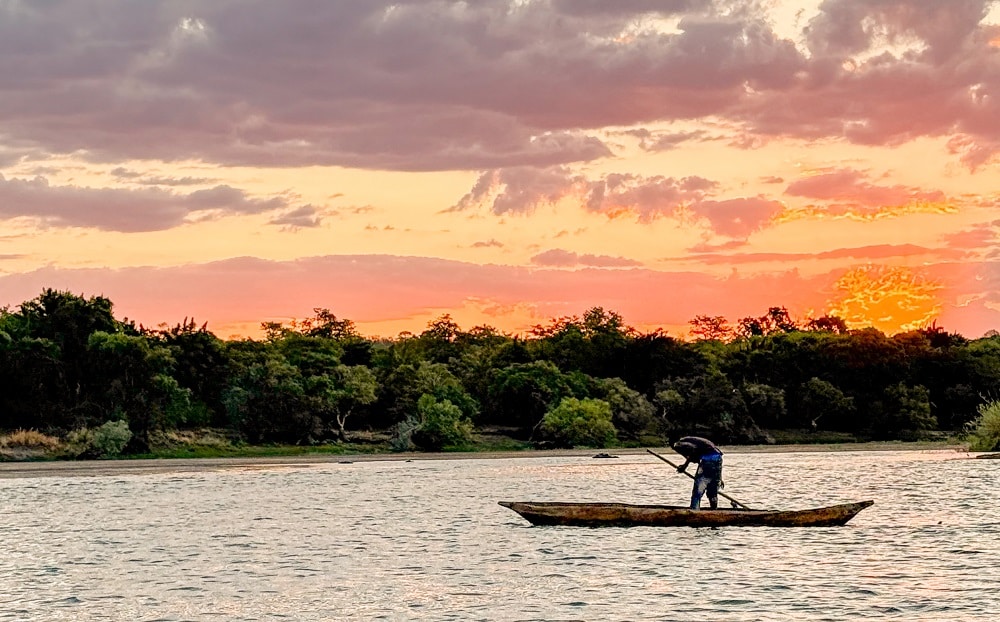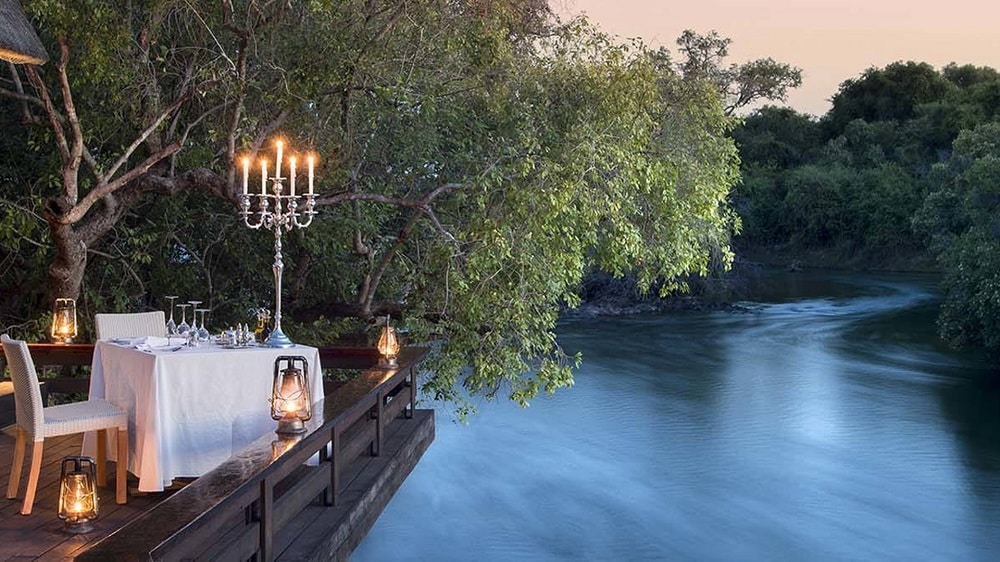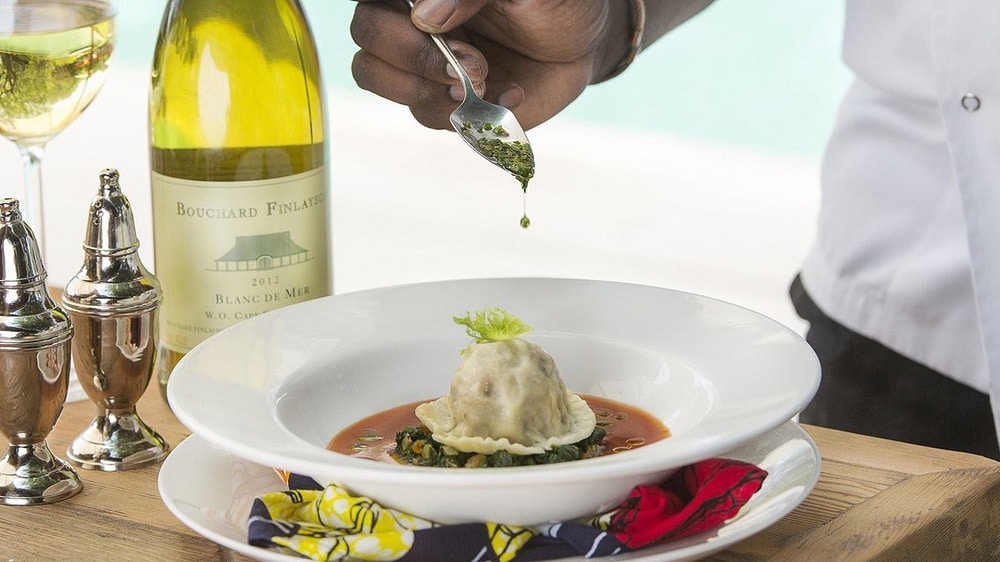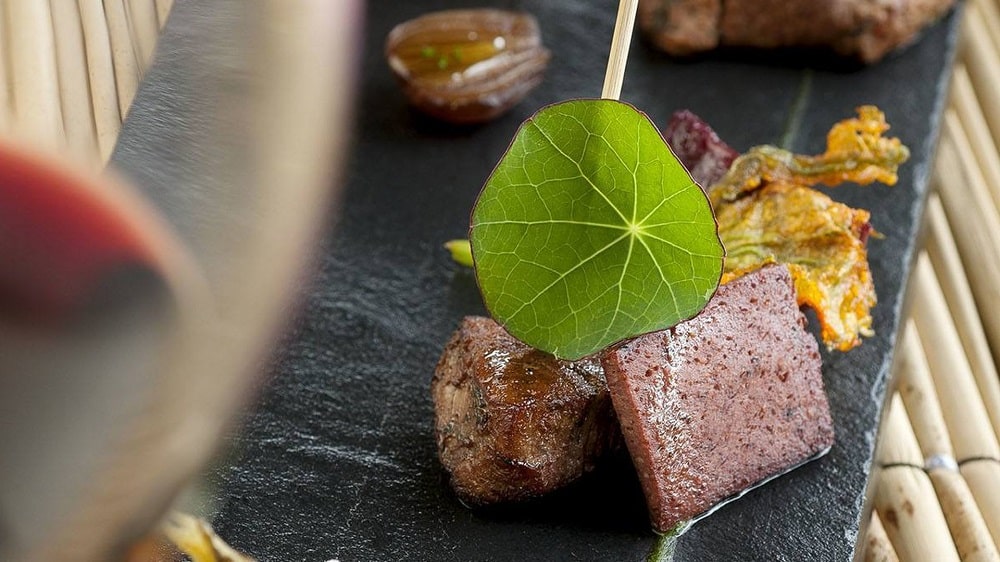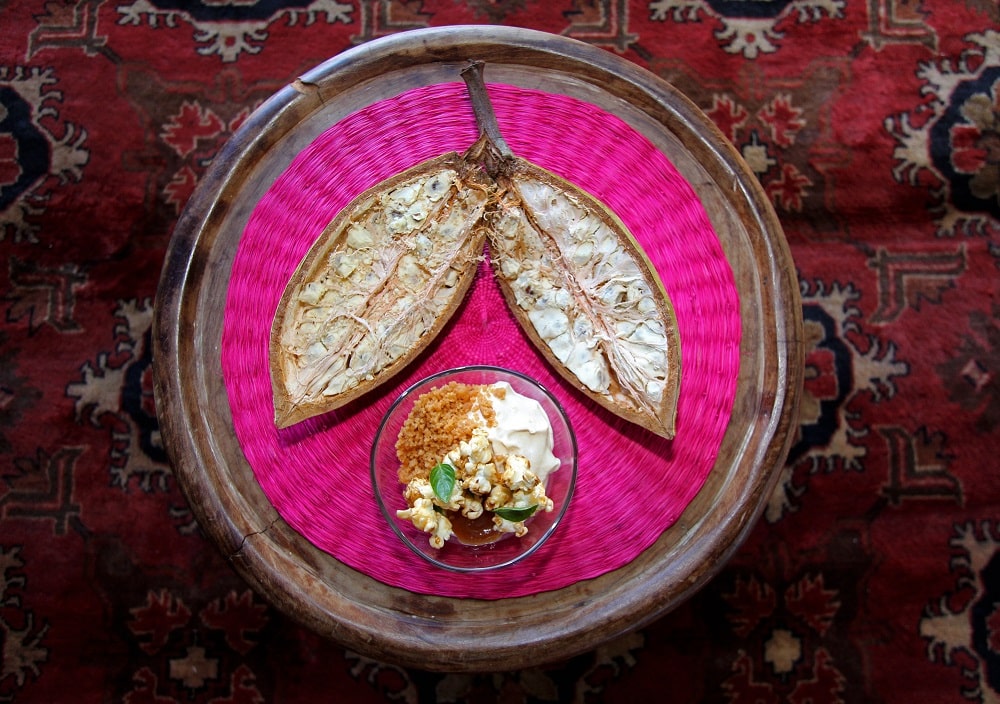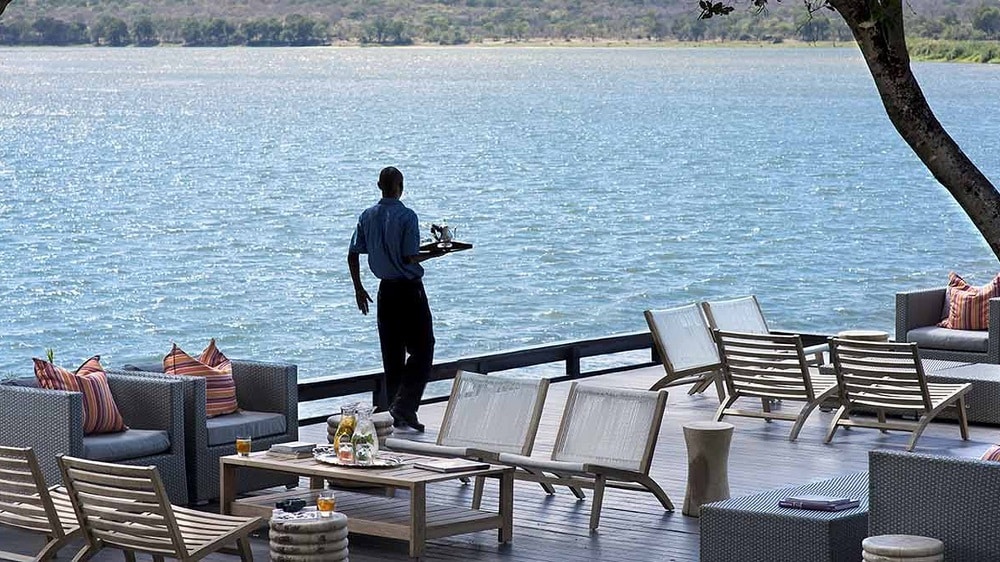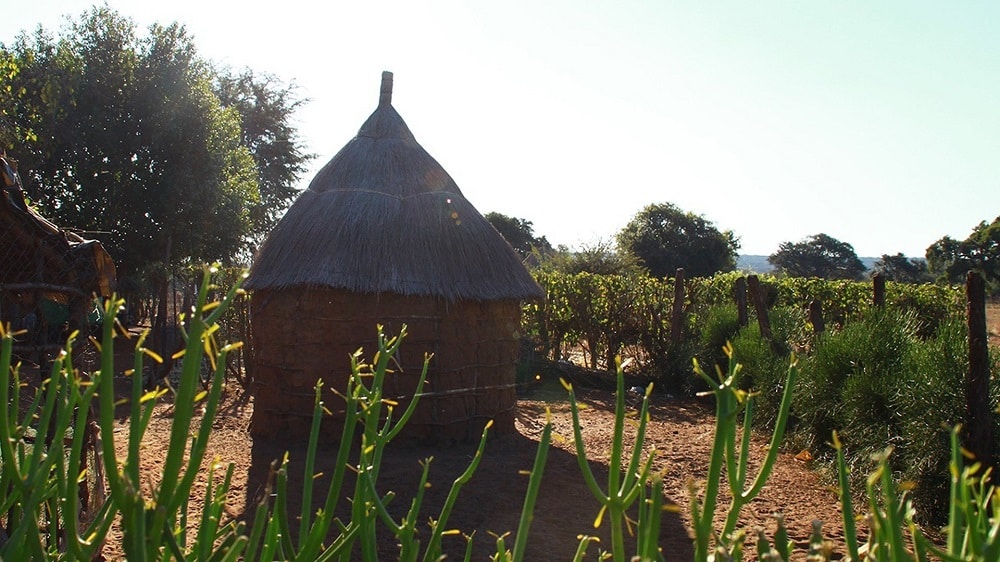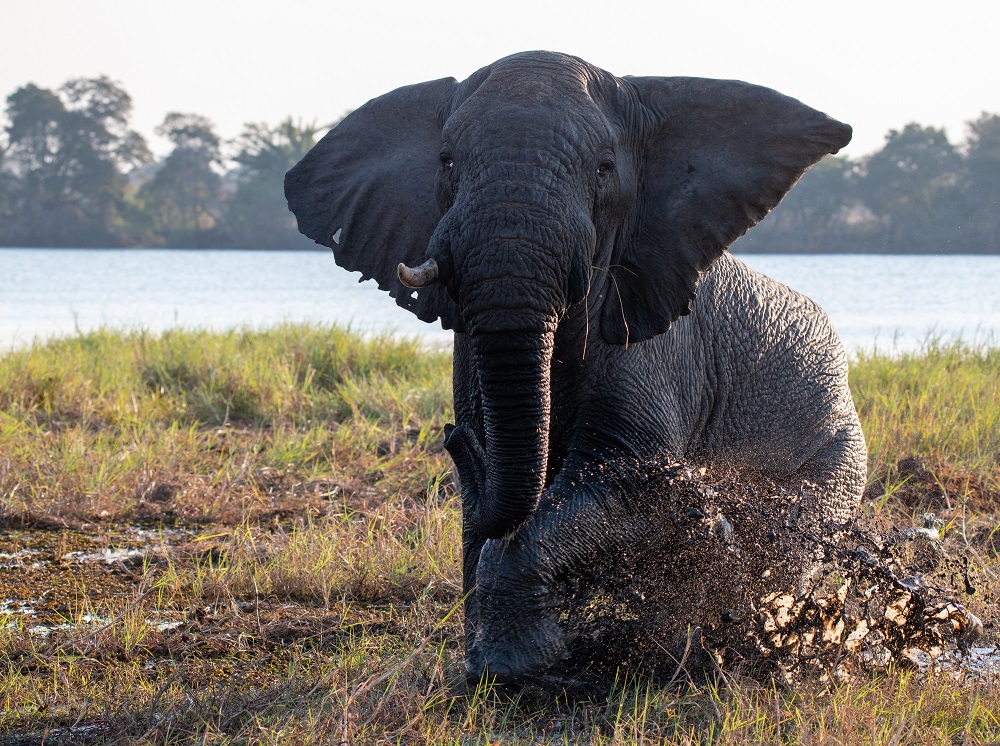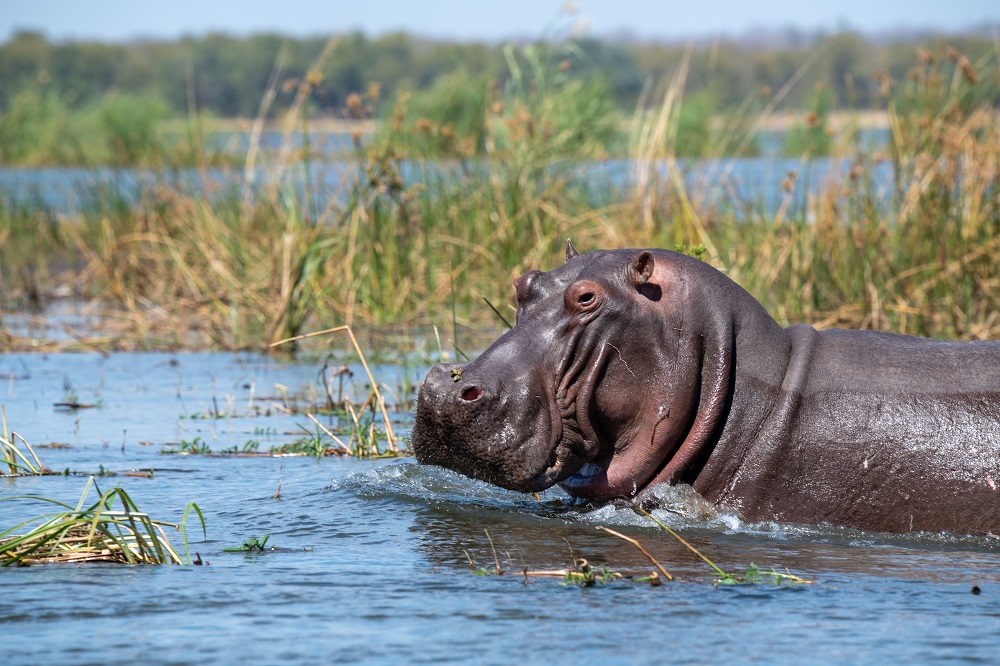Fish Eagle Safaris’ Lyndon Duplessis recently visited several Botswana properties on an educational trip; here is the second part of his report. Part one (reporting on Gomoti Plains, Kwando 4 Rivers and Dinaka), can be found HERE).
Maxa
We were the first group to visit the newly opened Maxa Camp located in the northeastern Okavango Delta. It has a brilliant location right next to the eponymous Maxa Lagoon. I was immediately struck by the simple beauty of the camp. There is almost a beach vibe being on the lagoon with sand pathways to get to all the rooms. In fact I was barefoot for quite a few portions of my stay.
This camp is the brainchild of three friends and business partners that have taken a very active hand in both the construction and the day-to-day operations of the camp. Our group was fortunate to meet two of the three at the camp, Michael and Danny, and the third, Shane, while we were in Maun. You can bet one or likely two of them will be there when you visit and it is a good thing because you can feel the enthusiasm for this camp whenever you speak with them. All three are also accomplished guides and are trying to run the camp slightly differently than the traditional ‘two-activity per day’ model. Such as by embarking on a long adventure that takes up the morning and goes into the afternoon and then maybe relax and enjoy the camp location and take in a sunset. We experienced this ourselves when we got to take an afternoon and sunset swim in the Okavango Delta which was truly a one-of-a-kind experience.
The wildlife was not as prevalent as some of the earlier or later camps but it is likely to improve over time as the animals become more accustomed to seeing vehicles and canoes/mokoros. This camp is more of an adventure camp right now so I would recommend taking that canoe trip, making a day of it, and then coming back to camp to enjoy some of the finest food I had while on safari.
Shinde
The first thing that popped out to me about Shinde was the location. The camp has been around for years so the trees in the immediate vicinity of the camp are all huge and create a great shady atmosphere. The camp sits right at the edge of a flowing portion of the Delta, making it really quite picturesque. The animals are some of the most calm you will ever see having grown accustomed to vehicles long, long ago. And there is plenty of wildlife. Here you have many of the various antelope species such as lechwe and impala, as well as zebras and all manner of plains game. With this come the predators that follow them. In particular, the area by the nearby airstrip was really good to us. We spotted the resident leopard and her cub on the first night and later on when we returned to head to Shinde Footsteps (more on that later), we witnessed the same leopard drag a recently killed lechwe quite some distance. Suffice it to say the game viewing was excellent.
Water activities are available here although since our time was somewhat limited we stuck to game drives. Again the Ker and Downey staff went above and beyond including a sunrise breakfast by 4 Pans, one of the very productive game areas near camp.
Kanana
This camp was originally in the itinerary for our trip but due to some unforeseen flooding in Maun earlier in the year, delays caused the reopening to be pushed back just beyond our scheduled arrival. Which is a real pity because this camp looks like it will soon become the crown jewel for Ker and Downey Botswana. The area is gorgeous, dotted with islands and floodplains as far as the eye can see. Even though the camp was not yet ready for guests we got to see a lot of the main area which had been completed, as well as a finished room. We even got to assist very slightly with some tiling on the bar in the main area. What an undertaking to get everything ready in time for the first guests to arrive! All in all it looks like it is going to be a fantastic combination of spacious and luxurious tents along with a beautiful main area all in a very game-rich and diverse location.
Shinde Footsteps
We returned to Shinde Airstrip to then make the drive (probably at least an hour) to Footsteps. Initially it was nice to see some of the wildlife areas we got to spend more time at when we stayed at Shinde but after a while it was very much a transfer. The rains have been strong this year so there were some areas where we needed to cross high water. It made the drive interesting but also a bit longer than you might think. Eventually helicopter transfers from Shinde airstrip might become preferable. Shinde Footsteps is very remote and very exclusive with only four tents in total. It is ideal for small groups of 6 to 8 who want exclusive use of a property. The amount of giraffes in the area was really stunning and the general wildlife viewing was quite good even though we only had a few game drives. The camp is right next to a body of water and it makes for an iconic Delta setting. If you are there early in the season do beware of the bugs and don’t forget to put on some repellent.
If you are up for a last-minute trip to Botswana or thinking ahead for 2026 or even 2027, by all means reach out to Lyndon at lyndon@fisheaglesafaris.com. He’d be happy to respond by email or arrange a Zoom meeting for you to be introduced to a couple of the members of our team. There’s nothing we like more than talking about Africa and finding out more about exactly what kind of a trip you might have in mind. We can also be reached by phone at 713-467-5222 or 1-800-513-5222 any time of the day and weekends. Please leave a message with the answering service and one of us will get back to you promptly.
Ultimate big game safari: Mokete and Chitabe
For the ultimate big game safari in Botswana the combination of Mokete and Chitabe is unbeatable. The sheer volume of lion and buffalo at Mokete and the diversity of predators and general game at Chitabe make it the obvious choice for a six to eight night wildlife viewing safari that will exceed just about anybody’s expectations, particularly late in the dry season.
We all know the wildlife in the late dry season is exceptional in Botswana, but we also know what the heat can be like in late September through October, and into early November. It can make things decidedly uncomfortable inside the tents in the afternoons and evenings. Which have led operators like ourselves to take much of northern Botswana completely out of consideration for trips from about mid-September onwards. At least until now.
With the addition of an advanced evaporative cooler system at Chitabe and Chitabe Lediba, Wilderness now has a beautiful camp to match the extraordinary out of camp experience. Chitabe has the most advanced evap-cooler system in Botswana – even better than traditional basic airconditioning. The evap-cooler is much better than aircon for “tent” type structures. The cold air which the evap-cooler generates pushes the warm out, keeping it at the desired temp all day/night. Also there are vents everywhere – bedroom, lounge and bathroom, not just one vent, so this makes a massive difference to keeping the whole room cool.
With effective in-room cooling systems now in place at Chitabe and at Mokete, guests can experience one of the best wildlife and camp experiences in Botswana, regardless of the heat at the end of the dry season. We have an attractive offer in place for an 8-night/9 day safari incorporating the two properties. The wildlife viewing and photography opportunities at the two camps are about as good as it gets:
- Mega herds of buffalo being constantly harassed by lions at Mokete. This is one of the few places in Africa where you stand a realistic chance of observing lion-buffalo interaction, rather than it being a completely ‘chance’ occurrence.
- Observing large herds of elephants emerge from a mopane forest to slake their thirst at water holes on the edge of the Mababe depression from the comfort of a sunken hide which was built at the perfect spot for afternoon photography.
- Walking with an aardvark in an open plain not far from Mokete Camp in the late afternoon, just before sunset. A unique opportunity to observe and photograph this rarely seen and altogether peculiar animal in decent light.
- Observe and photograph lions, cheetahs, leopards, African painted dogs and more at Chitabe, sometimes just minutes away from camp. No need for long, bumpy drives – the camp is in the epicenter of the best wildlife area. Chitabe is renowned for interaction between predator species – and no better time to see it than late in the dry season.
For more information about traveling to Botswana from mid-September through mid-November, email Lyndon at lyndon@fisheaglesafaris.com or call and leave a message with our answering service at 1-800-513-5222 or 713-467-5222.
Camp photos courtesy Maxa, Shinde, Kanana, Shinde Footsteps and Wilderness Destinations


